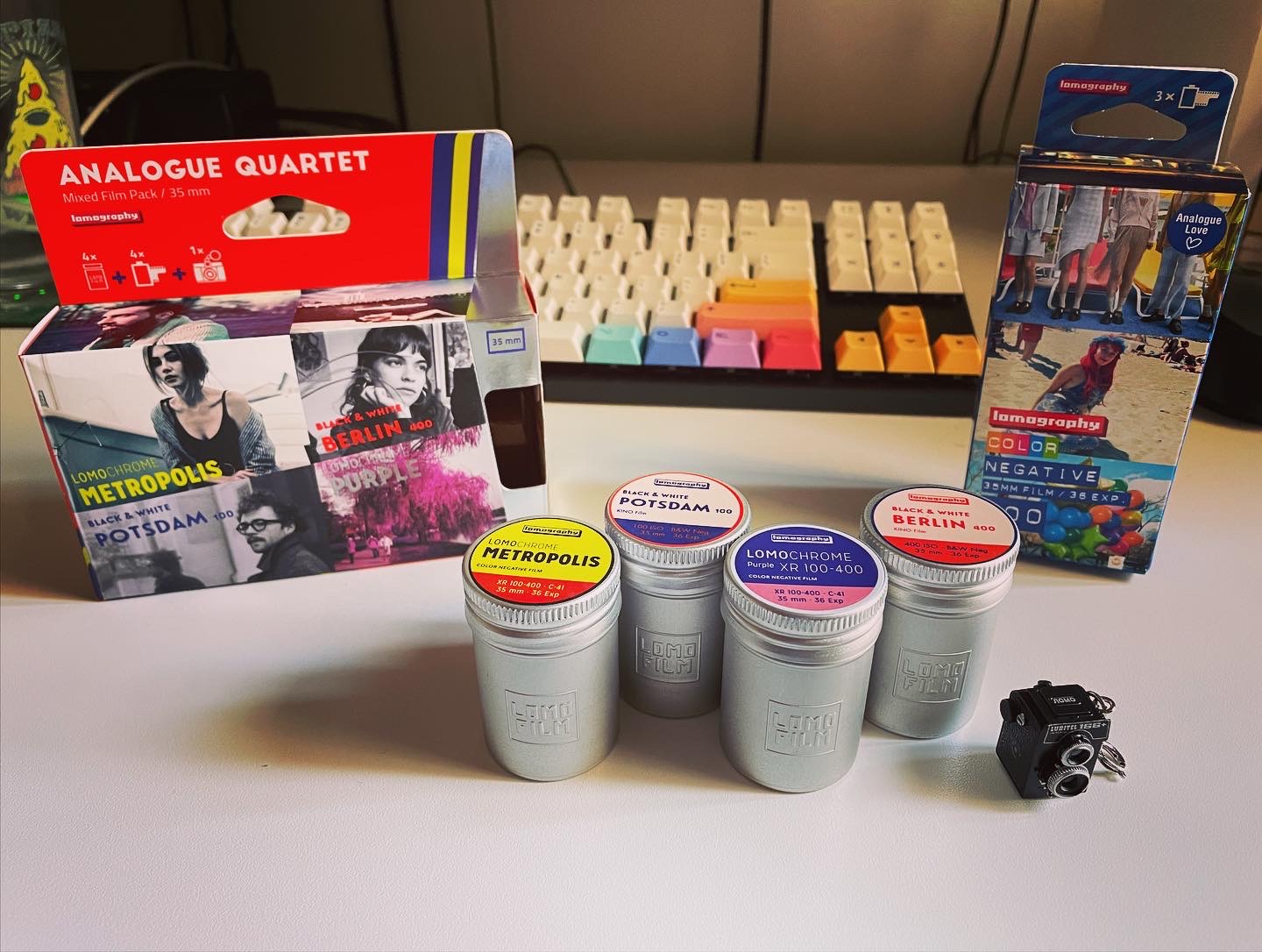Jumping Headfirst into Film Photography
Published on Mar 23, 2022
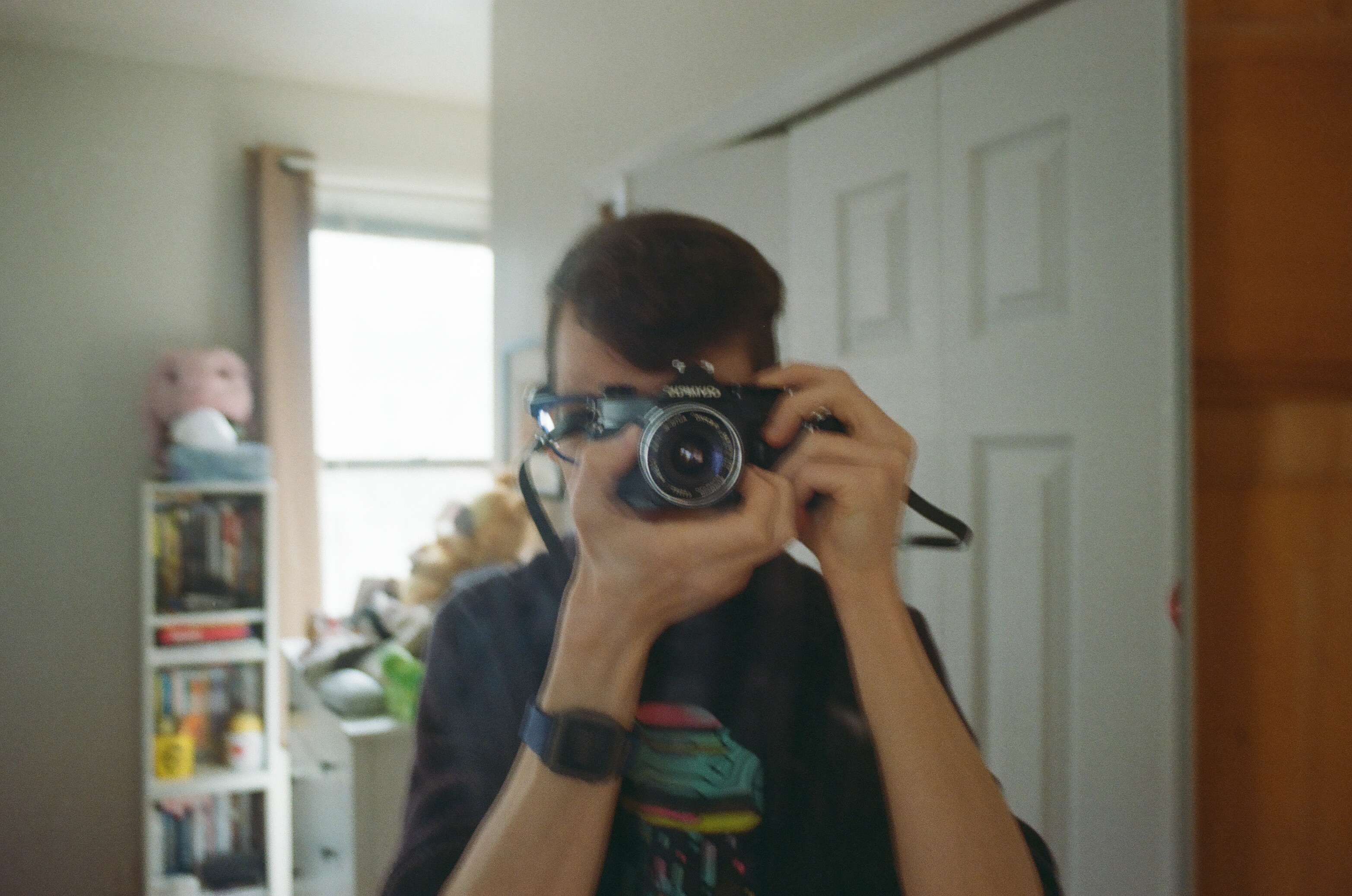
At the beginning of this year, I made a post about all the things I wanted to do in 2022. Not resolutions, per se, but a list of things that I've been wanting to try out for a while, or otherwise wanted to get to. Sort of a fancy to-do list.
One of the items on that list was to purchase a film camera and finally get into analog photography. It's something I've been interested in for a long time, as someone who works in visual media, but never had both the time and money simultaneously required to really get into it. It always seemed a little too daunting.
This year, a combination of things - including playing through Umurangi Generation over the New Year's holiday - conspired to give me one big push toward finally letting myself try this thing that I always (correctly) assumed I'd fall in love with. So I decided to make it my birthday gift to myself.
After googling, "good beginner film camera," a few times, and filtering through my criteria to find something with manual controls, that was easy to use, shot 35mm film (the most common consumer film format), and that was under or around my budget of $200, I settled on what would become my first manual film camera.
I say first manual film camera, because, having grown up in the 90s, I remember when film was the first and only choice when it came to photography, and so my first film camera (full stop) was this little beauty:
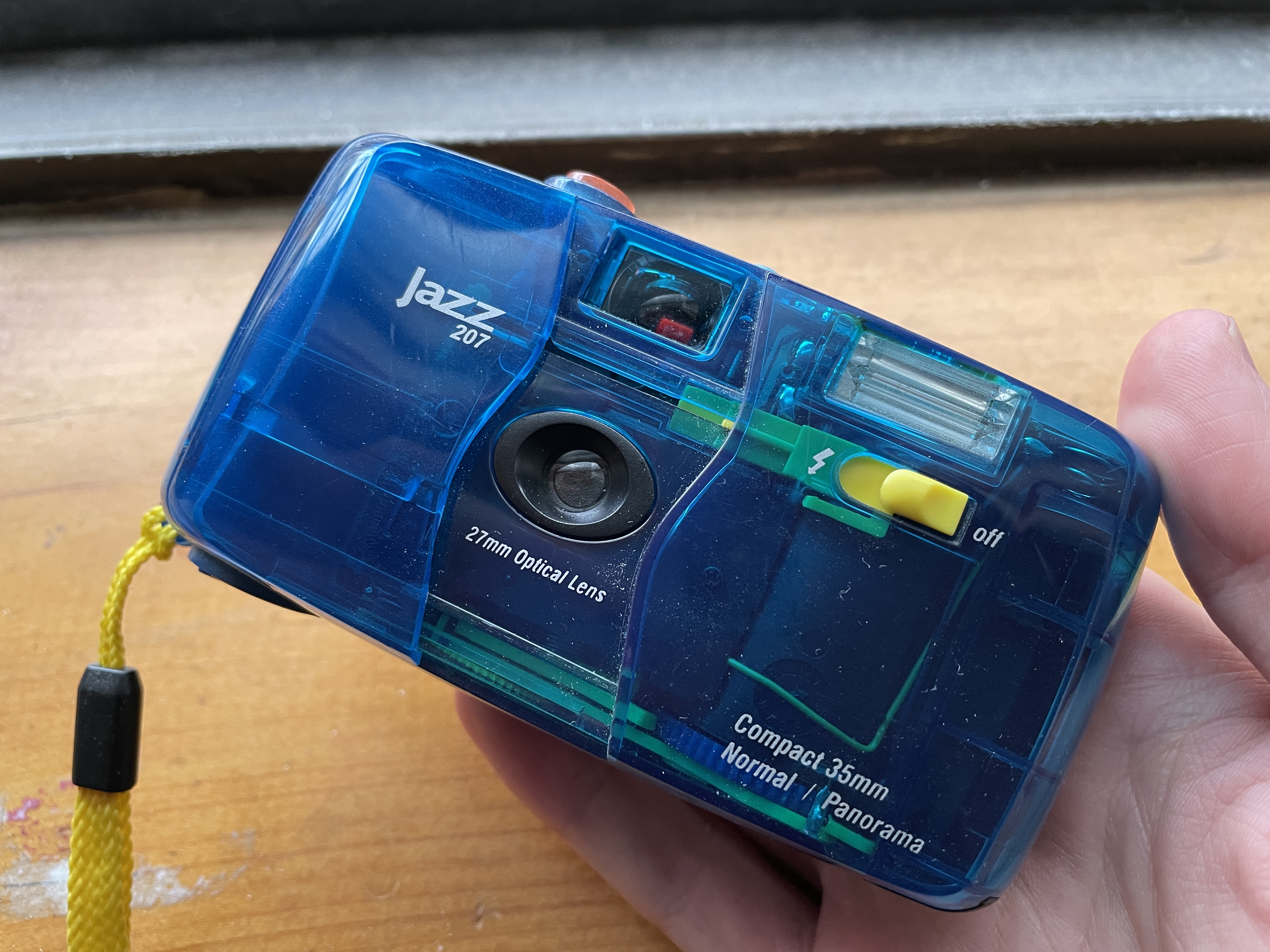
This is the Jazz Jelly 207. The Blueberry model, of course. I forgot I still had it until I started writing this blog just now. I'm so glad I do. It's beautiful. I might actually start using it again, now that I have some film. But I'm getting ahead of myself.
What I settled on for my very first manual film camera, was the Olympus OM-1:
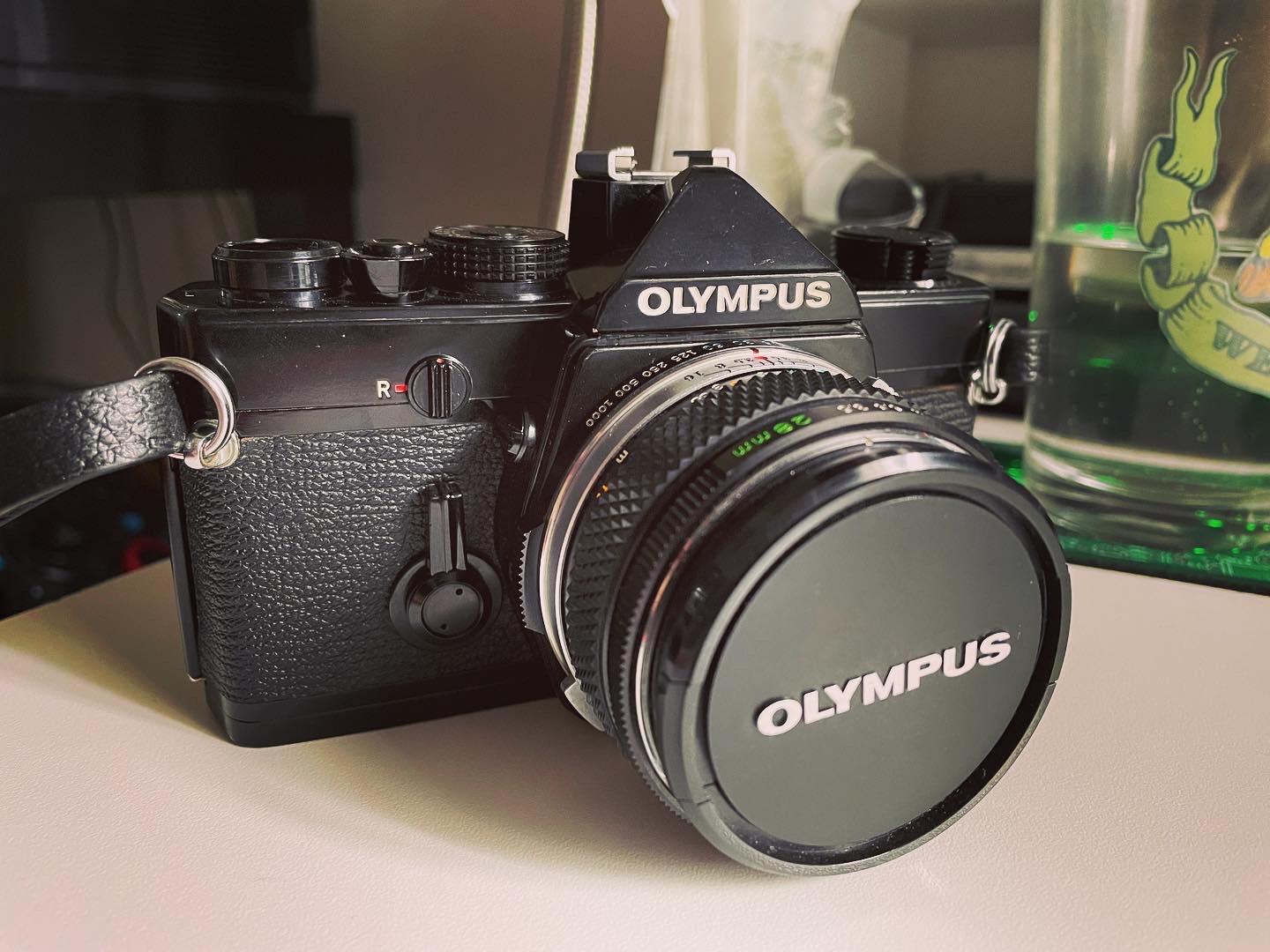
This pretty little number was made in 1973, when they apparently built things to last, because it's in absolutely pristine condition. This is no doubt due in part to the hard refurbishment work of the establishment from which I purchased it through eBay, but it genuinely looks like someone just had this thing sitting in a box somewhere for 50 years and never touched it. It's gorgeous.
(Shoutout to munakata_camera_jp on eBay, y'all are the real deal)
With my brand new old camera, and a couple old rolls of Lomography film in hand, both black and white and color negative, I set out into the rapidly warming March weather to do the damn thing.
Without further ado, here are my results. We'll start with my color photos, shot on Lomography 100 ISO Color Negative film (click to enlarge):
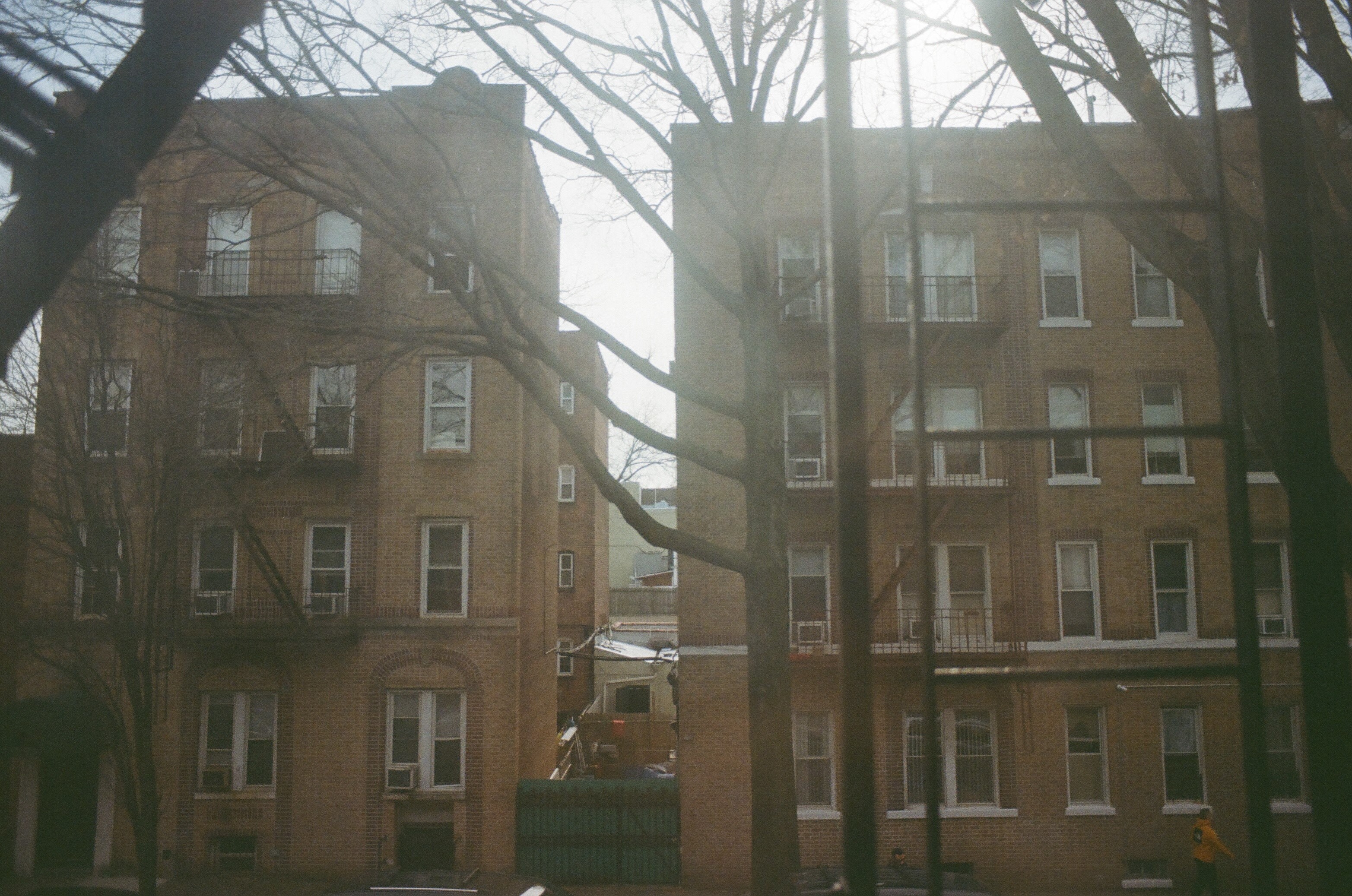
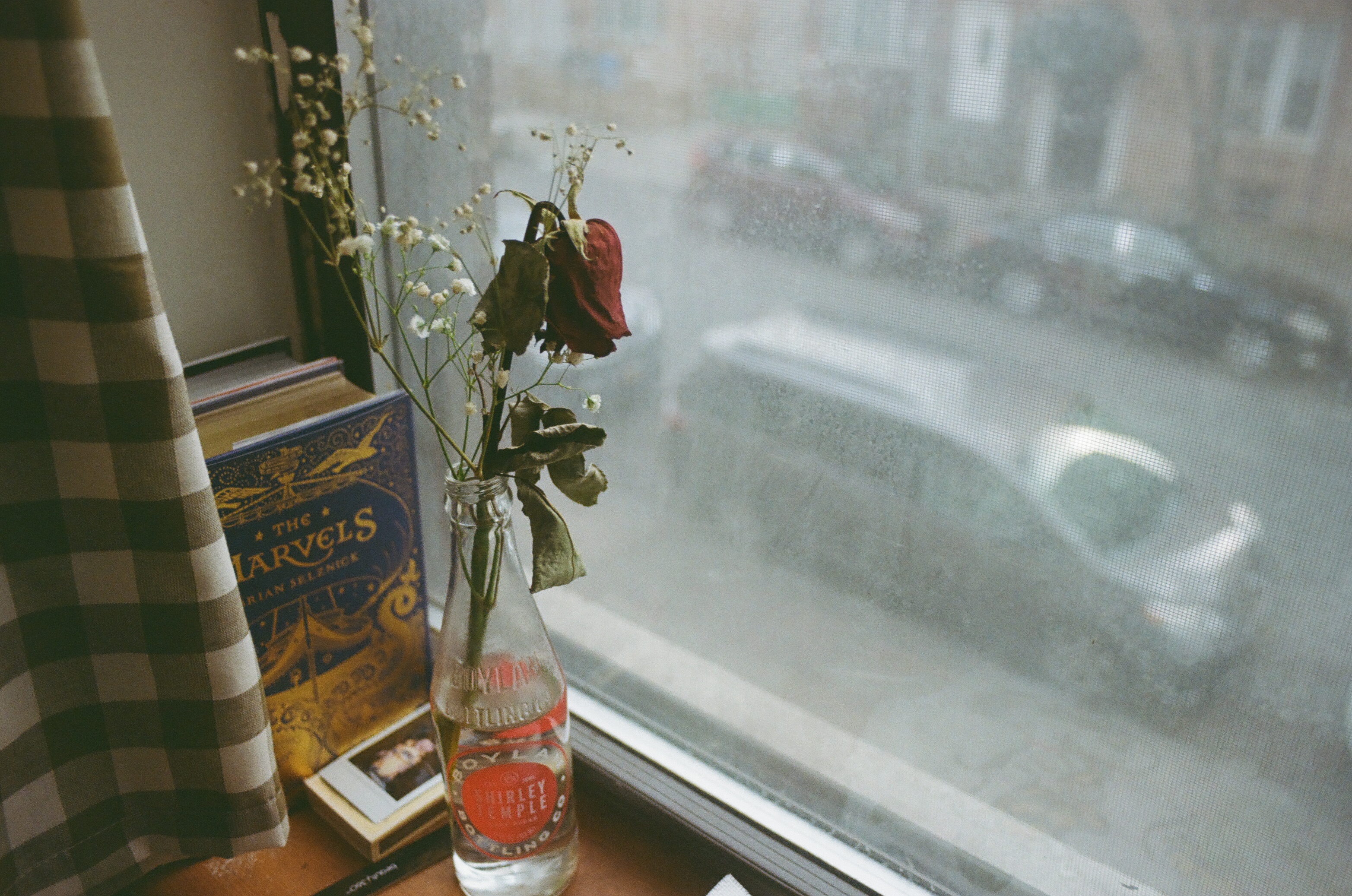
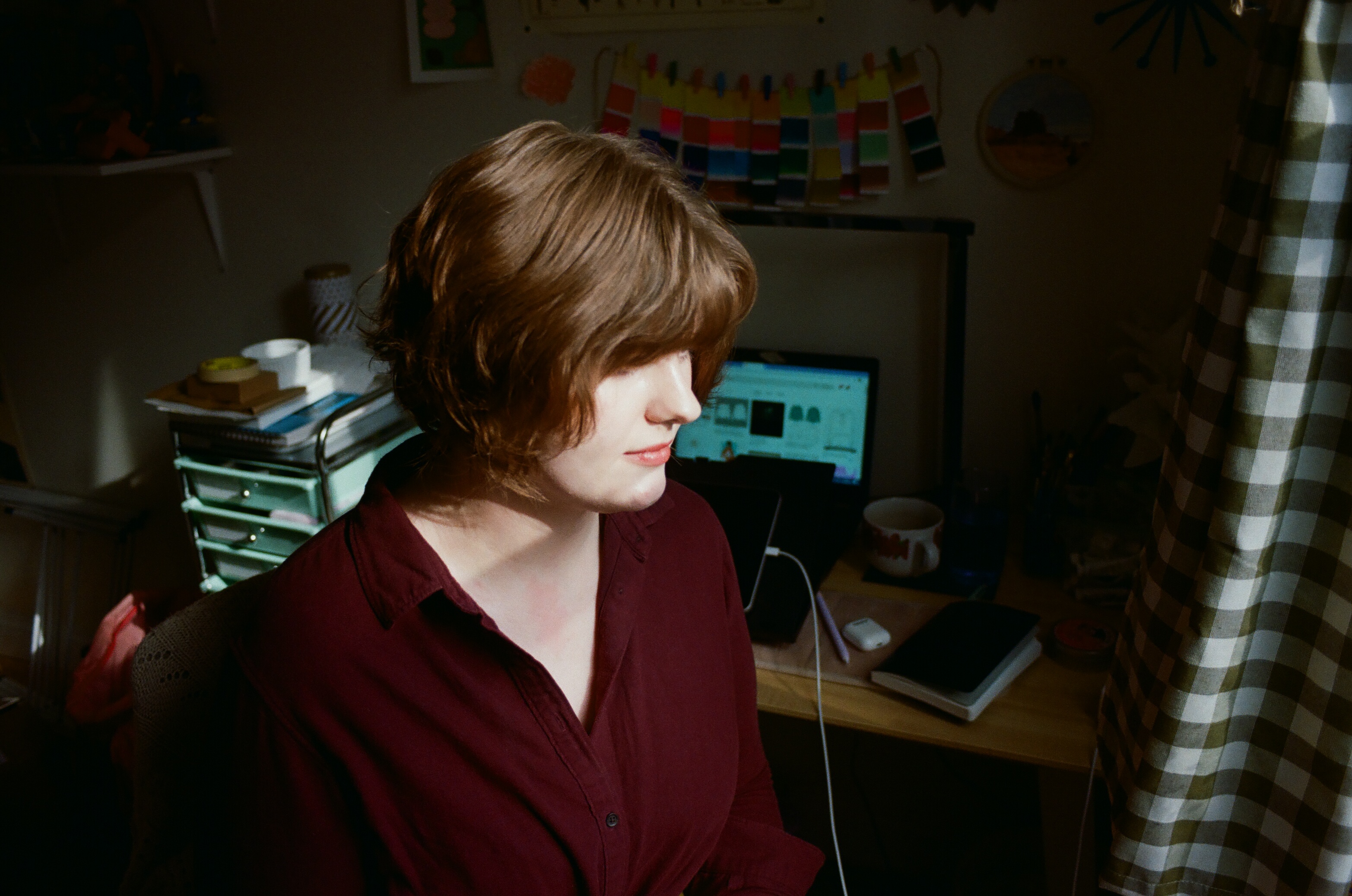
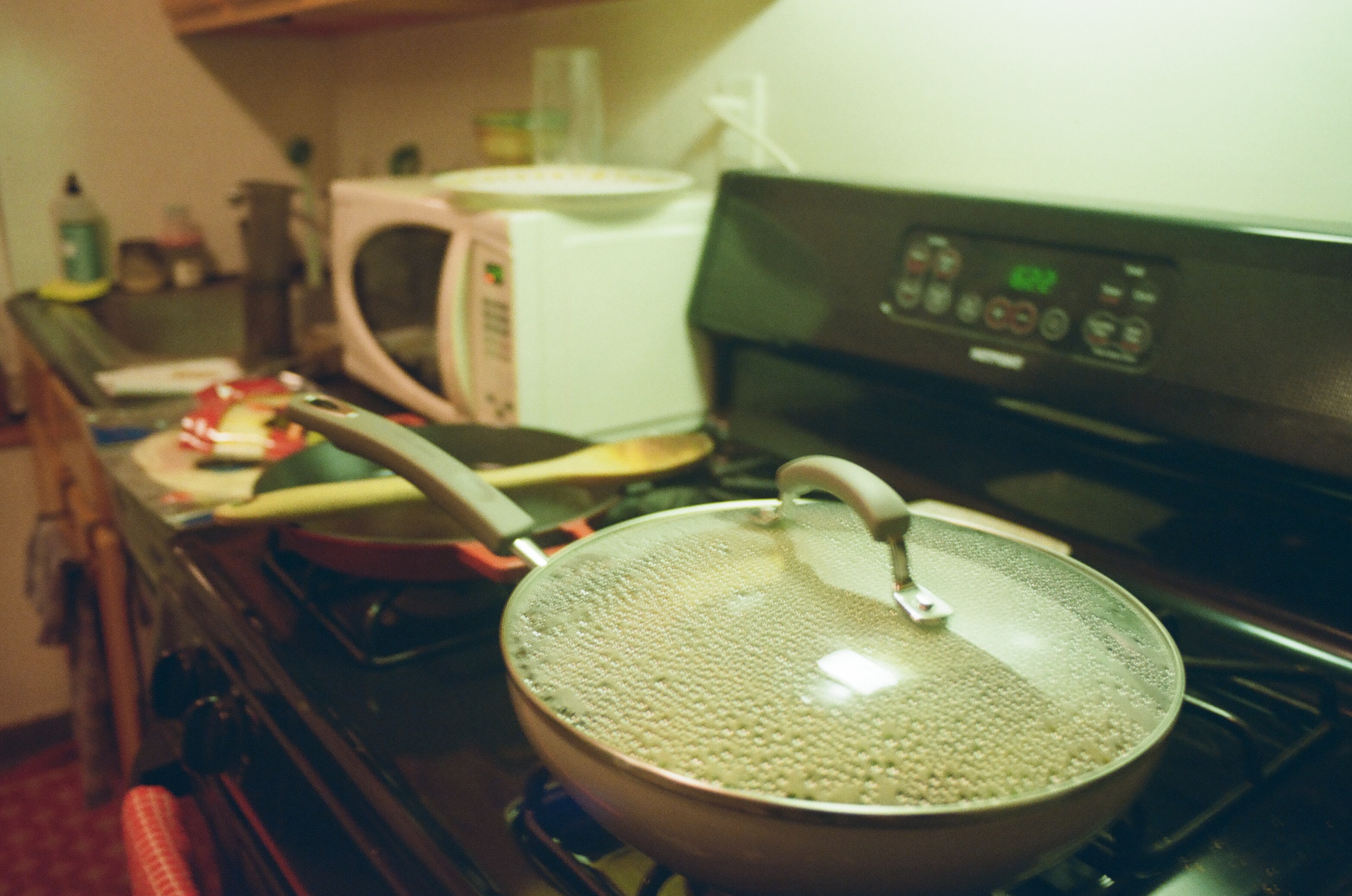
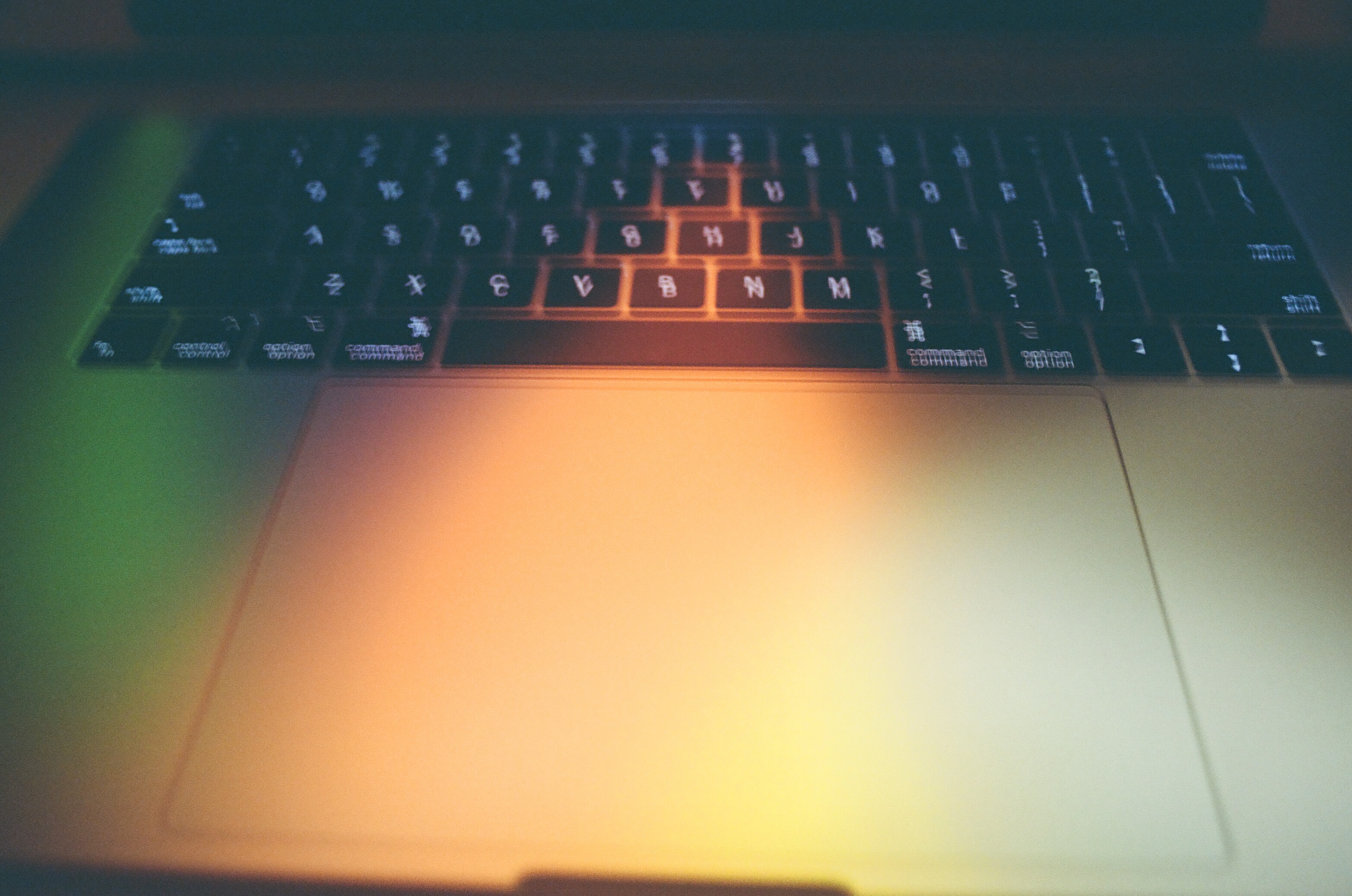
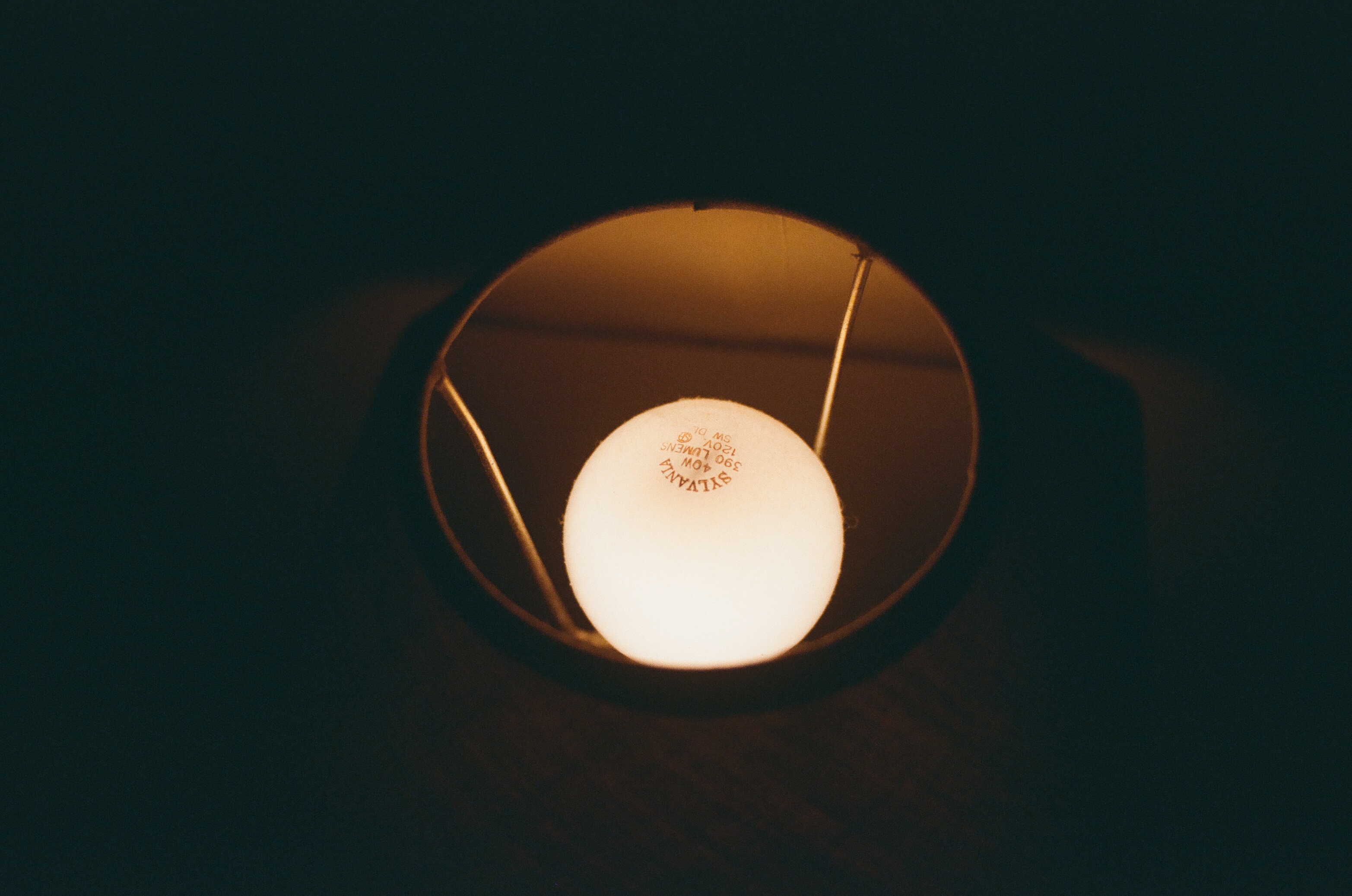
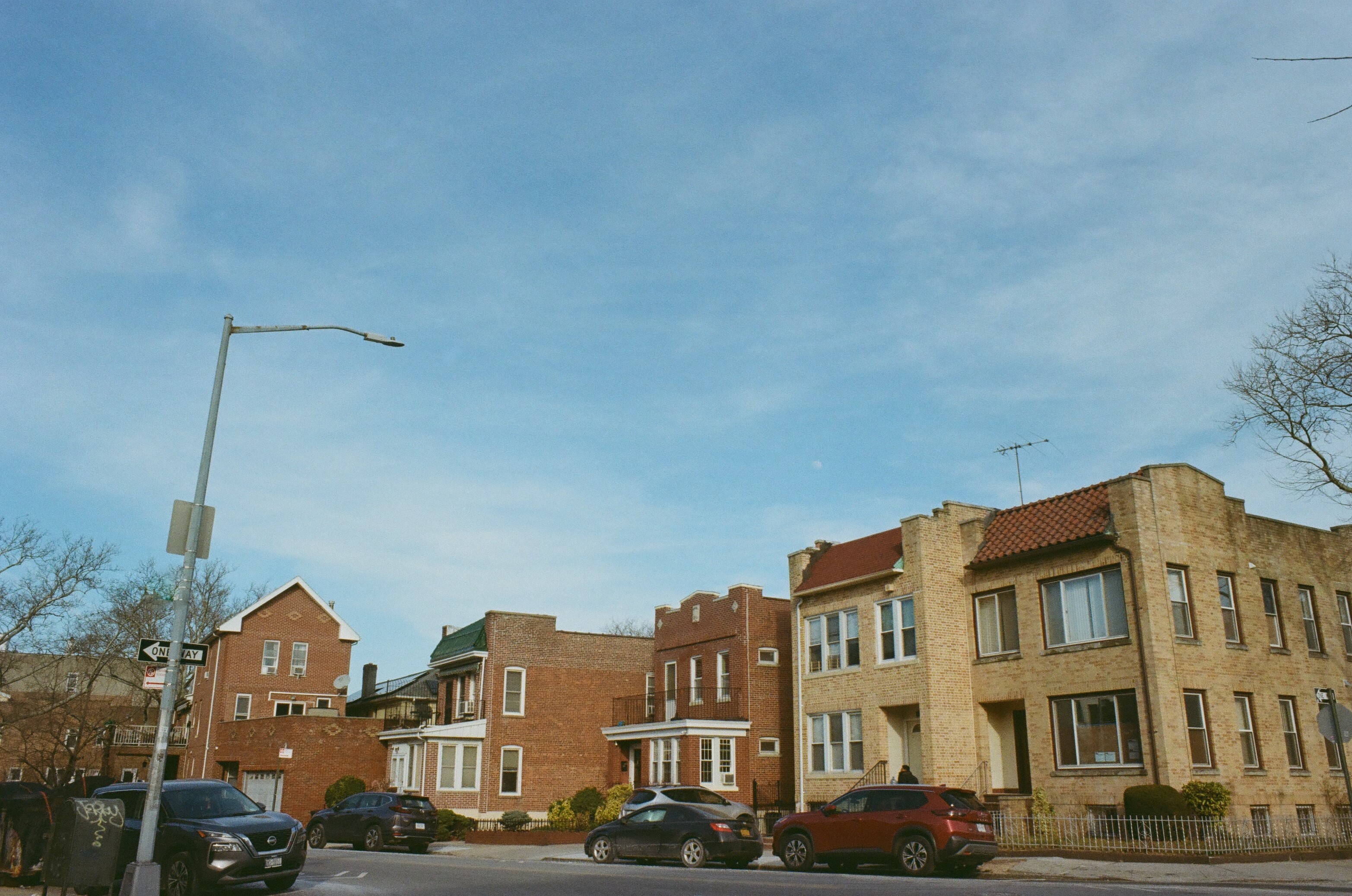
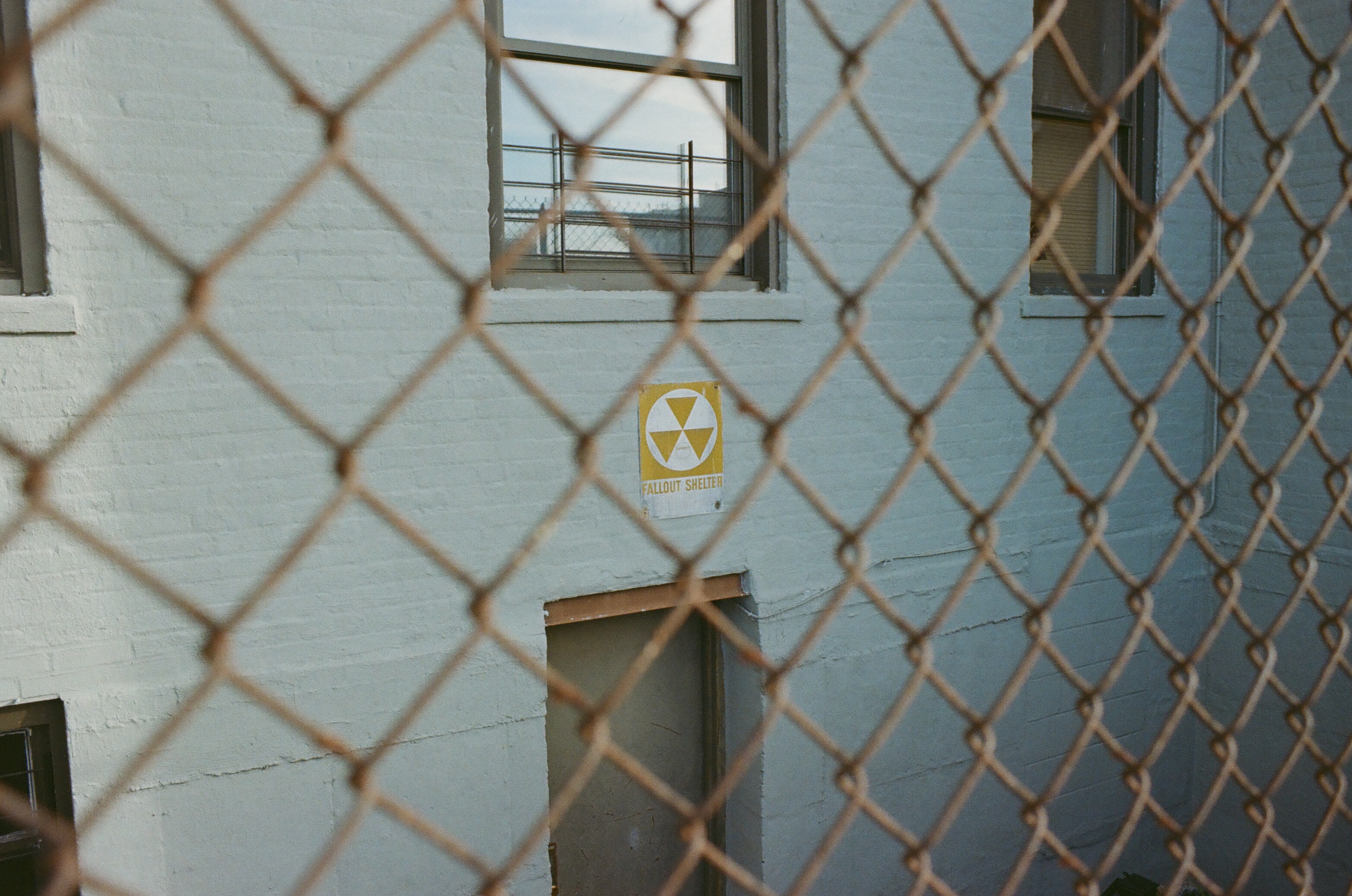
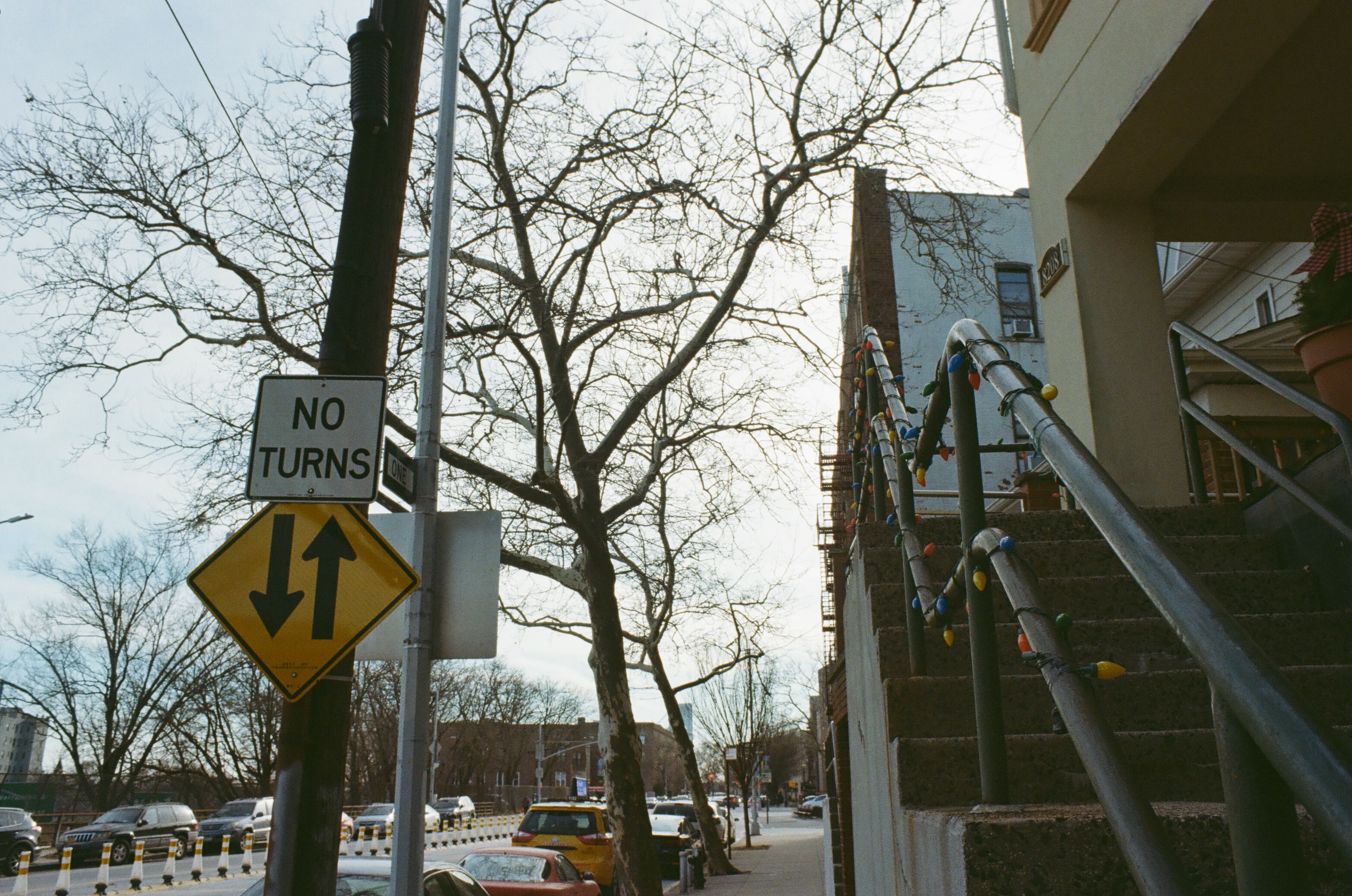
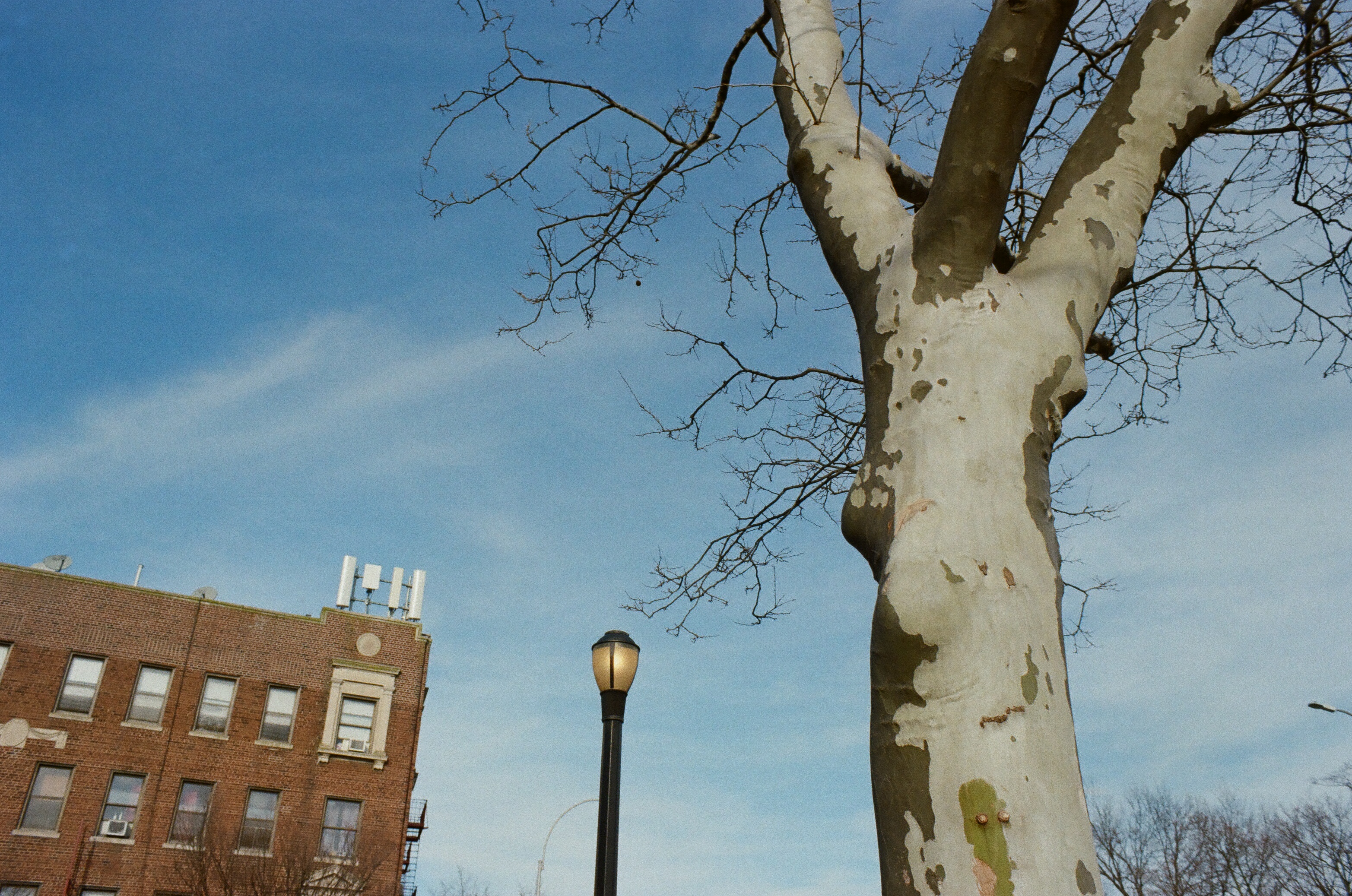
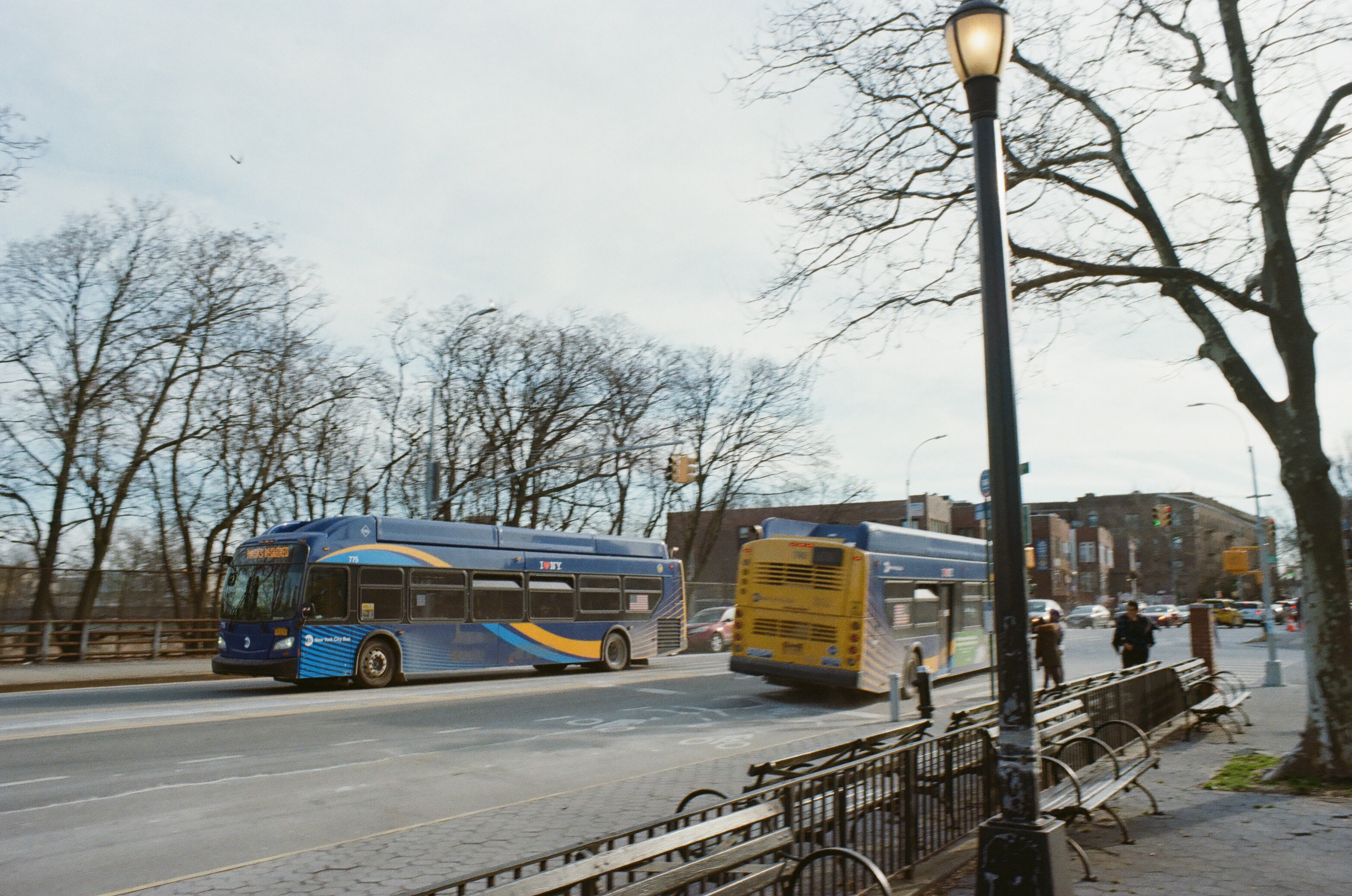
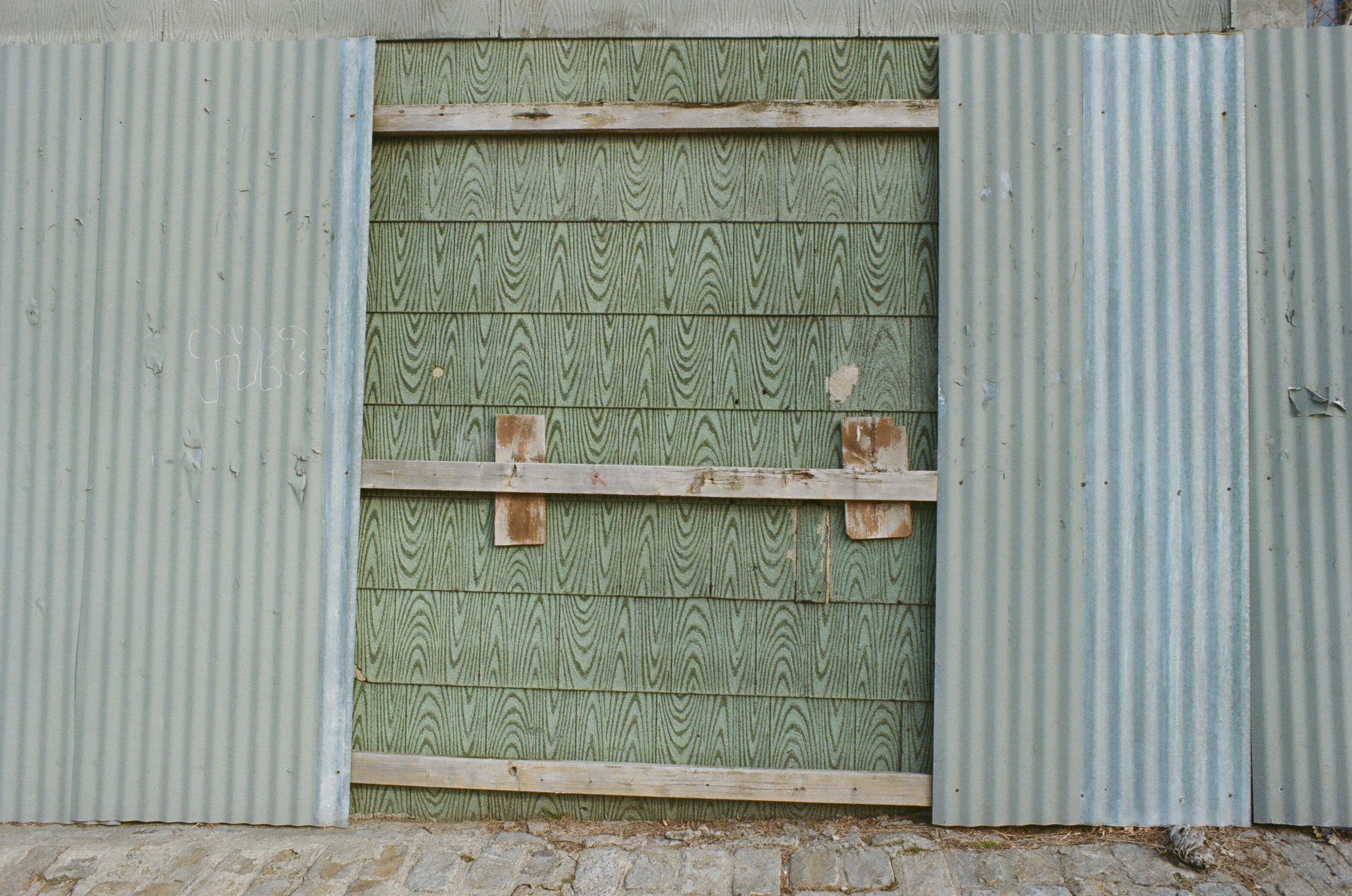
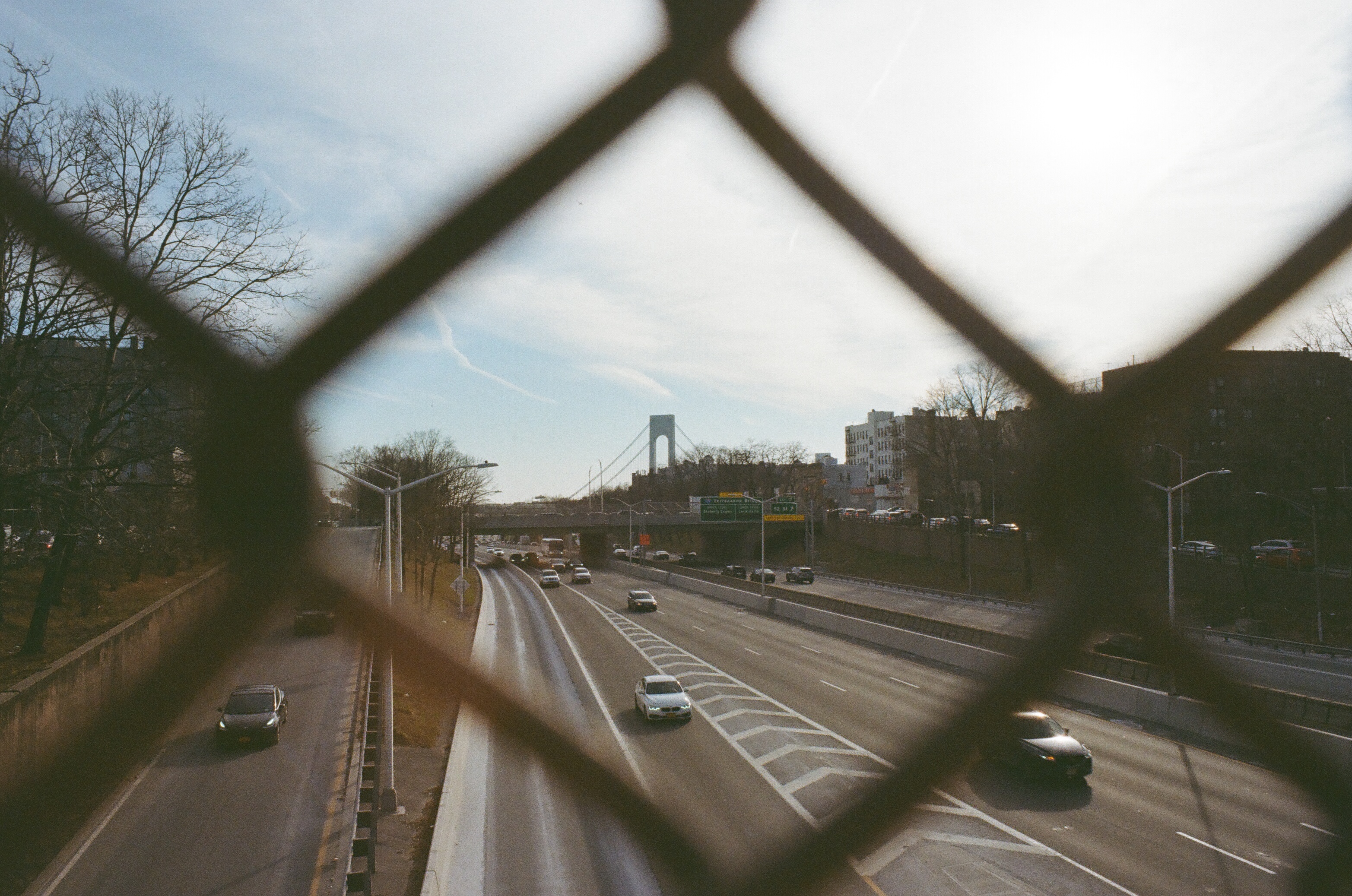
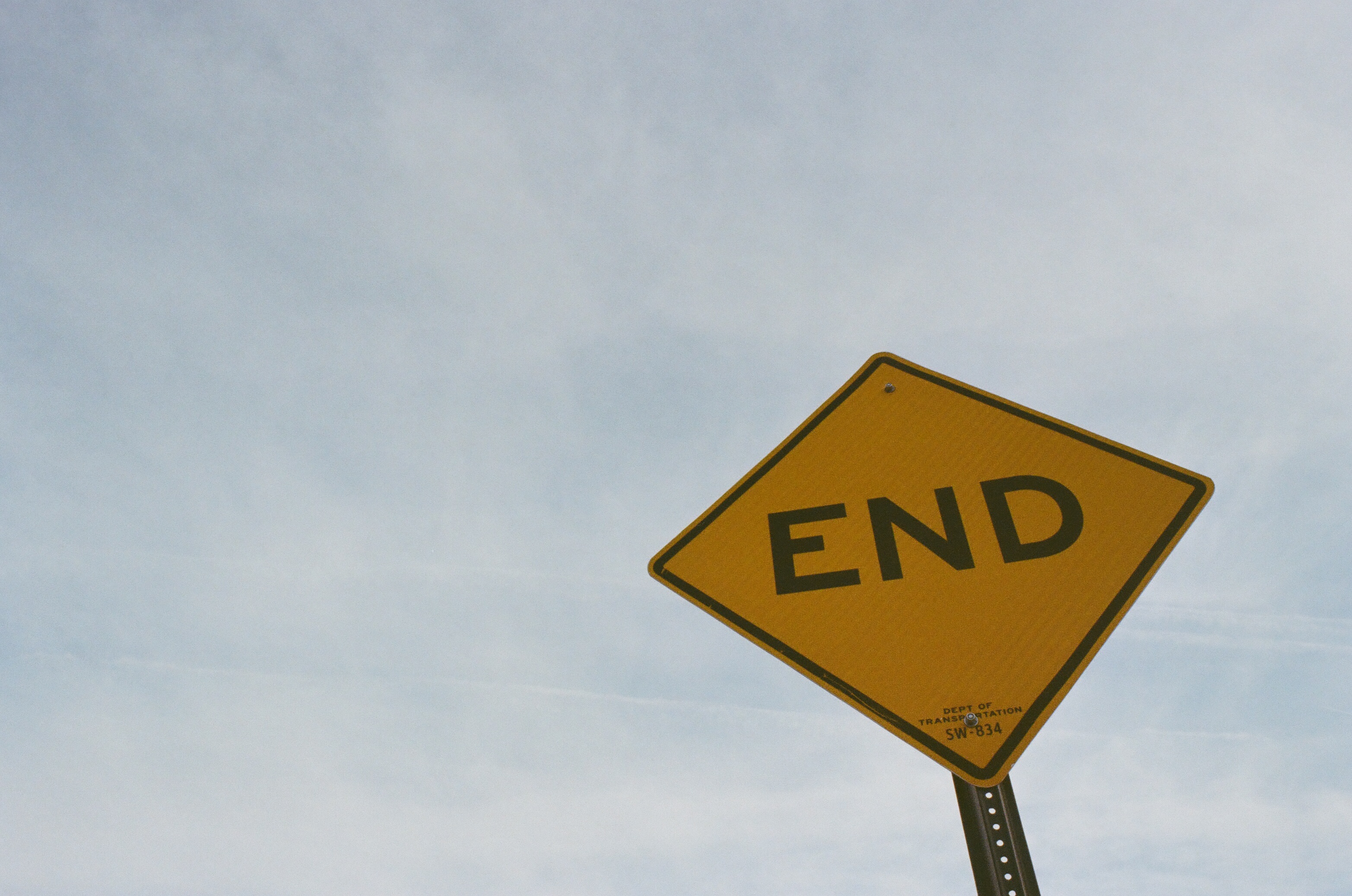

I'm so happy with how these turned out. Making the jump from digital to film, I was worried that the skills I'd already developed wouldn't translate in one of a hundred different ways, or maybe my instincts about how much light I needed would be off, and all my shots would turn out sort of muddy and disappointing. Not to mention the fact that I didn't even know if this camera worked! But happily, none of that turned out to be the case.
Some of that is due to the fact that I found a really helpful light metering app. Any time I'm unsure about how open or closed my aperture should be, or I move from indoors to outdoors, or vice versa, I can just hold up my phone to the scene I want to photograph, and the app will suggest the right settings. It's pretty foolproof.
As for the photos themselves, I really couldn't be more pleased with my first roll. I love the look of the grain. I love the way the shadows turn a little bit brown. I adore what this stock does with blues, especially the baby blue-greys of the fallout shelter wall and the corrugated metal fencing. I really love what happened with the shot of the pot on the stove, how the highlights all turned green under tungsten light. I don't know why that happened, but I love it!
This isn't everything I shot, obviously, there are 36 exposures to a standard roll of 35mm film, these are just the highlights. The rest is either too personal, too boring, or not very good. But the bad is good too, because it teaches you where the limit lies. That's what I was hoping to achieve with this first roll of film: not to start shooting all-timers from the outset, but to find the limit (to borrow a phrase from motorsport), and learn what I can and cannot do with this camera.
For instance, I learned that I cannot compensate for low lighting conditions by simply cranking down the shutter speed. Or I can, but I shouldn't expect the photo to be sharp, not if I'm shooting handheld. Shooting digitally, I could depend on Optical Image Stabilization (OIS) to save me in the end. Not here. This camera has no OIS. No camera would have OIS until 1994 (I think).
But let's move on now to the second roll I shot, which was a roll of Lomography Earl Grey 100 ISO Black & White film (again, click to enlarge):
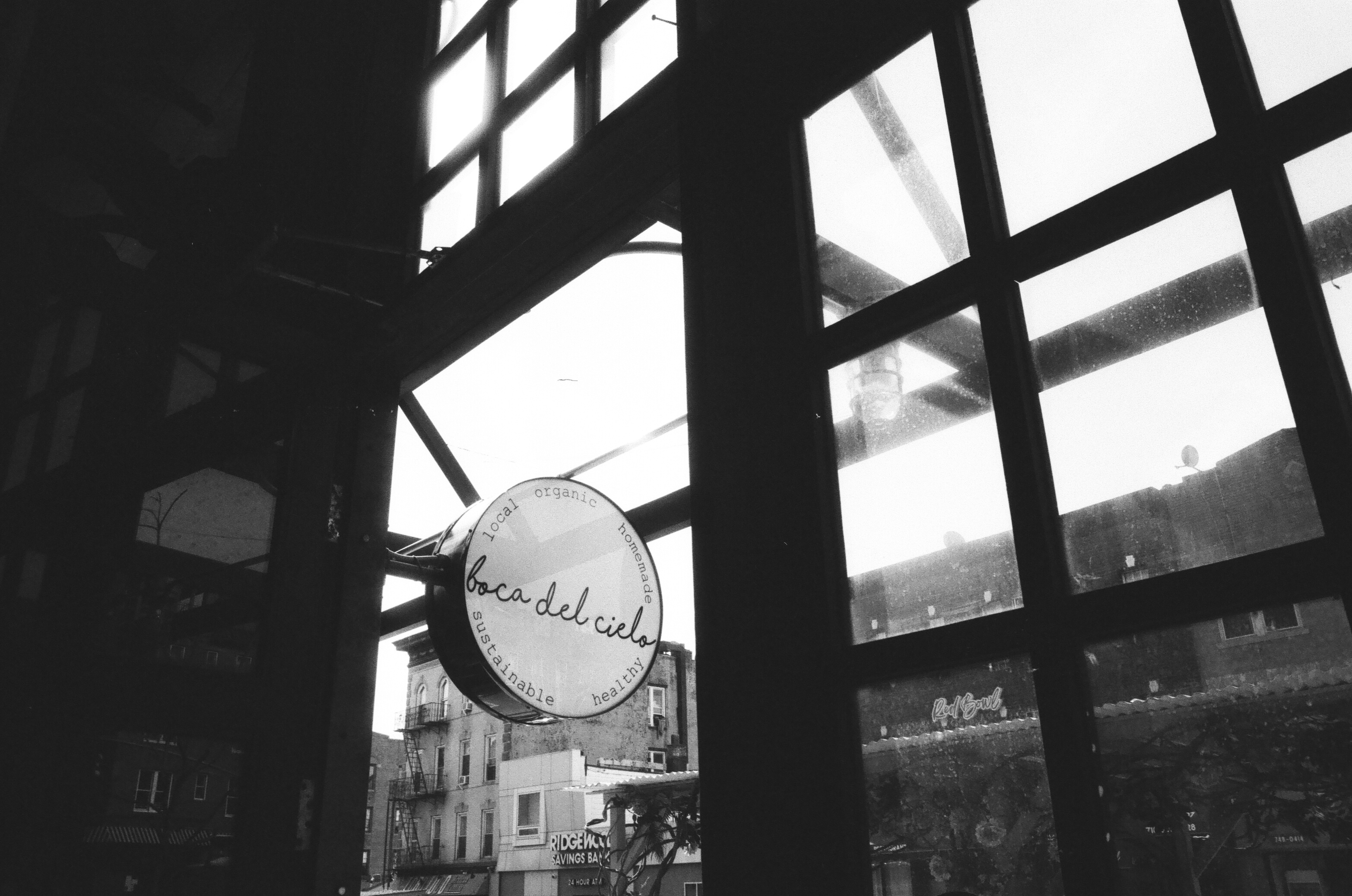
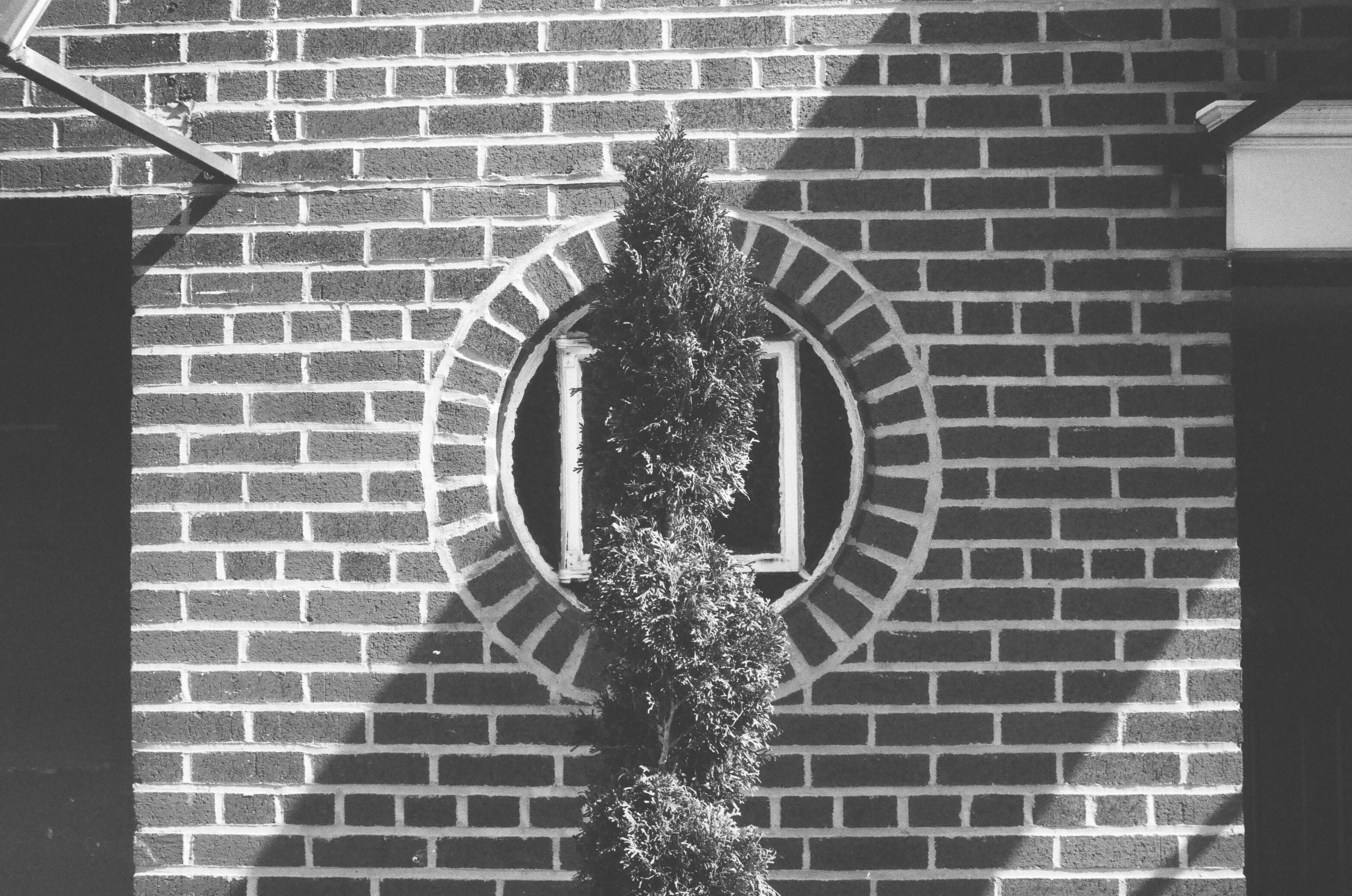
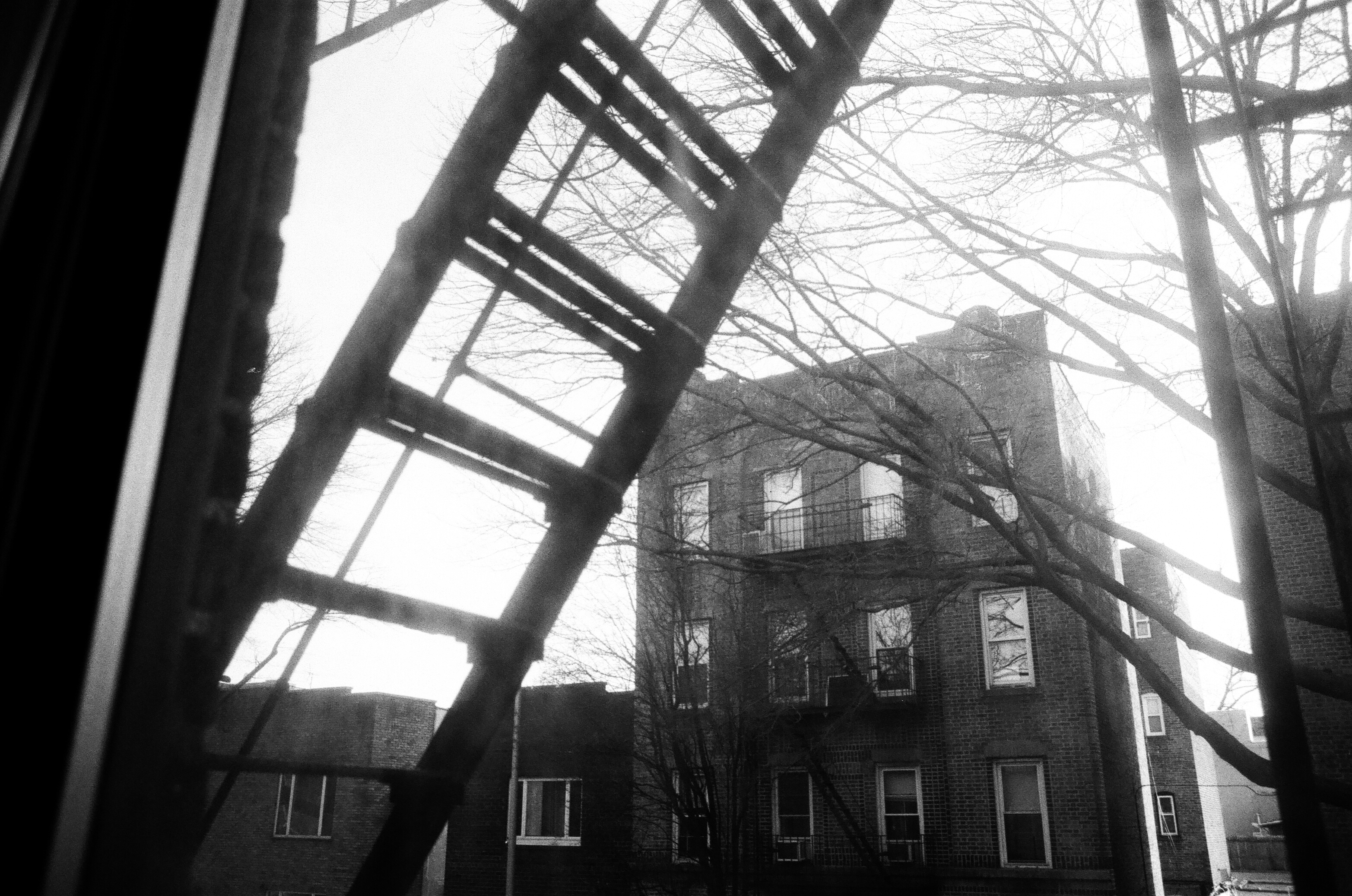
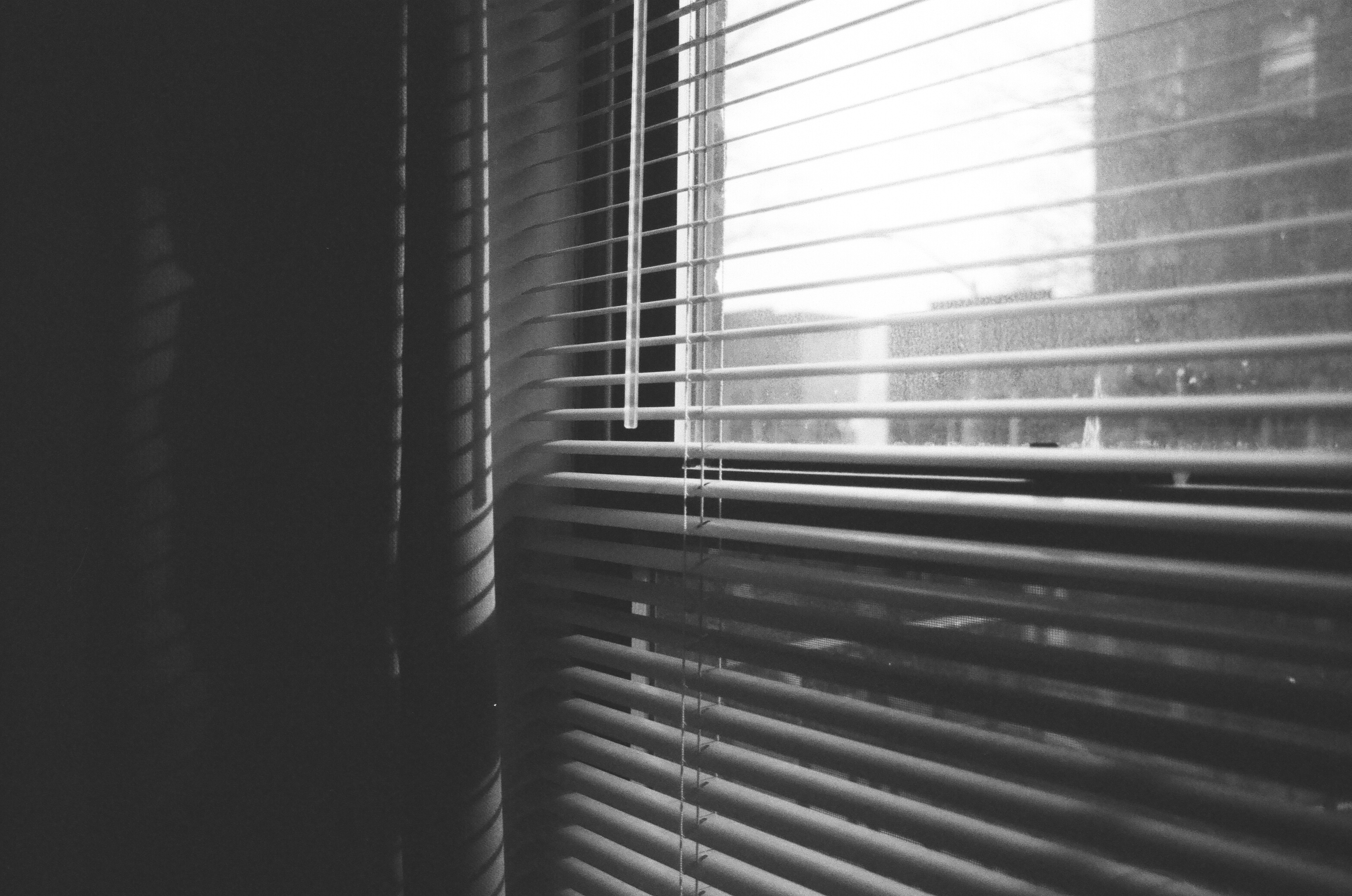
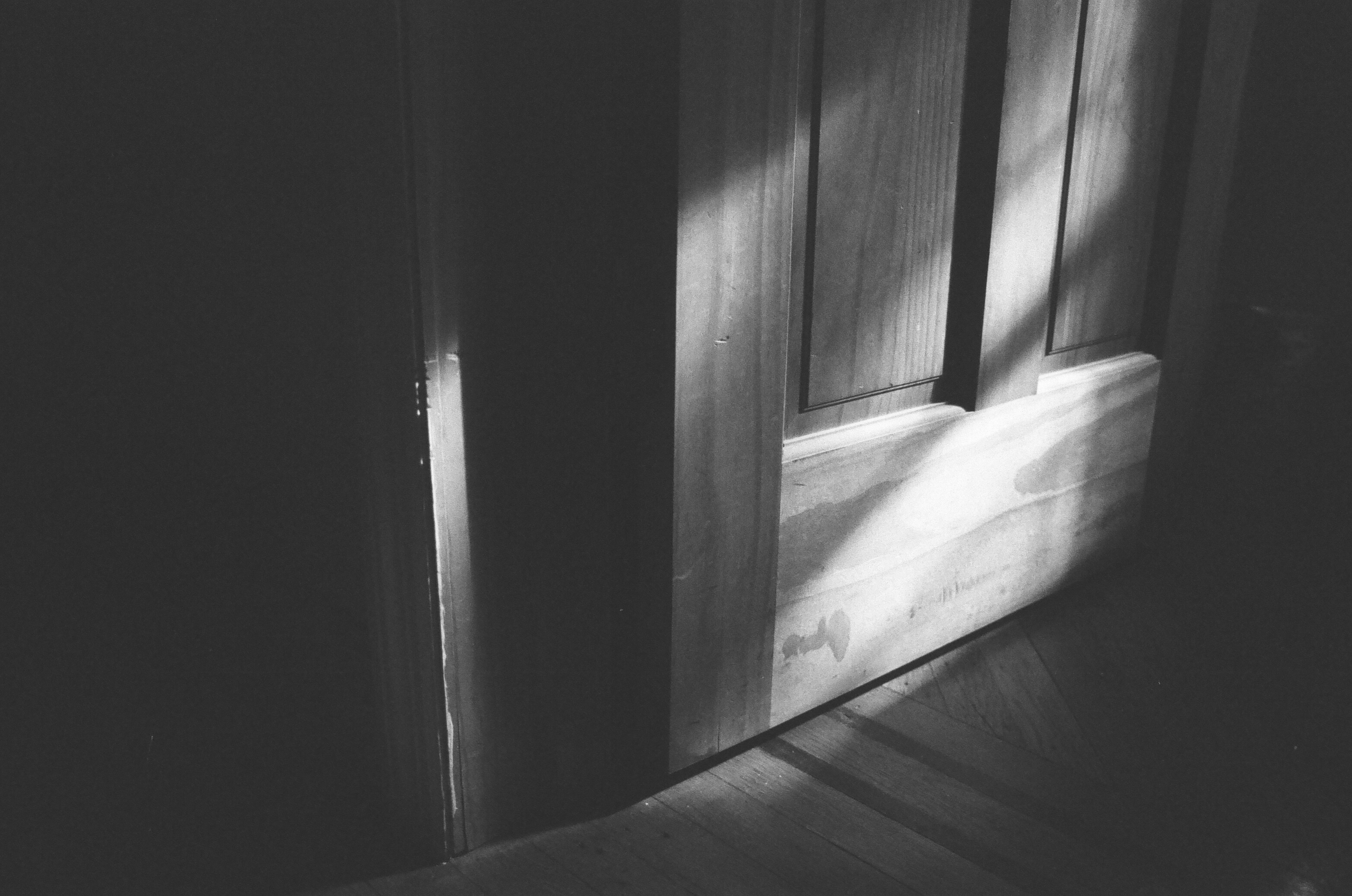
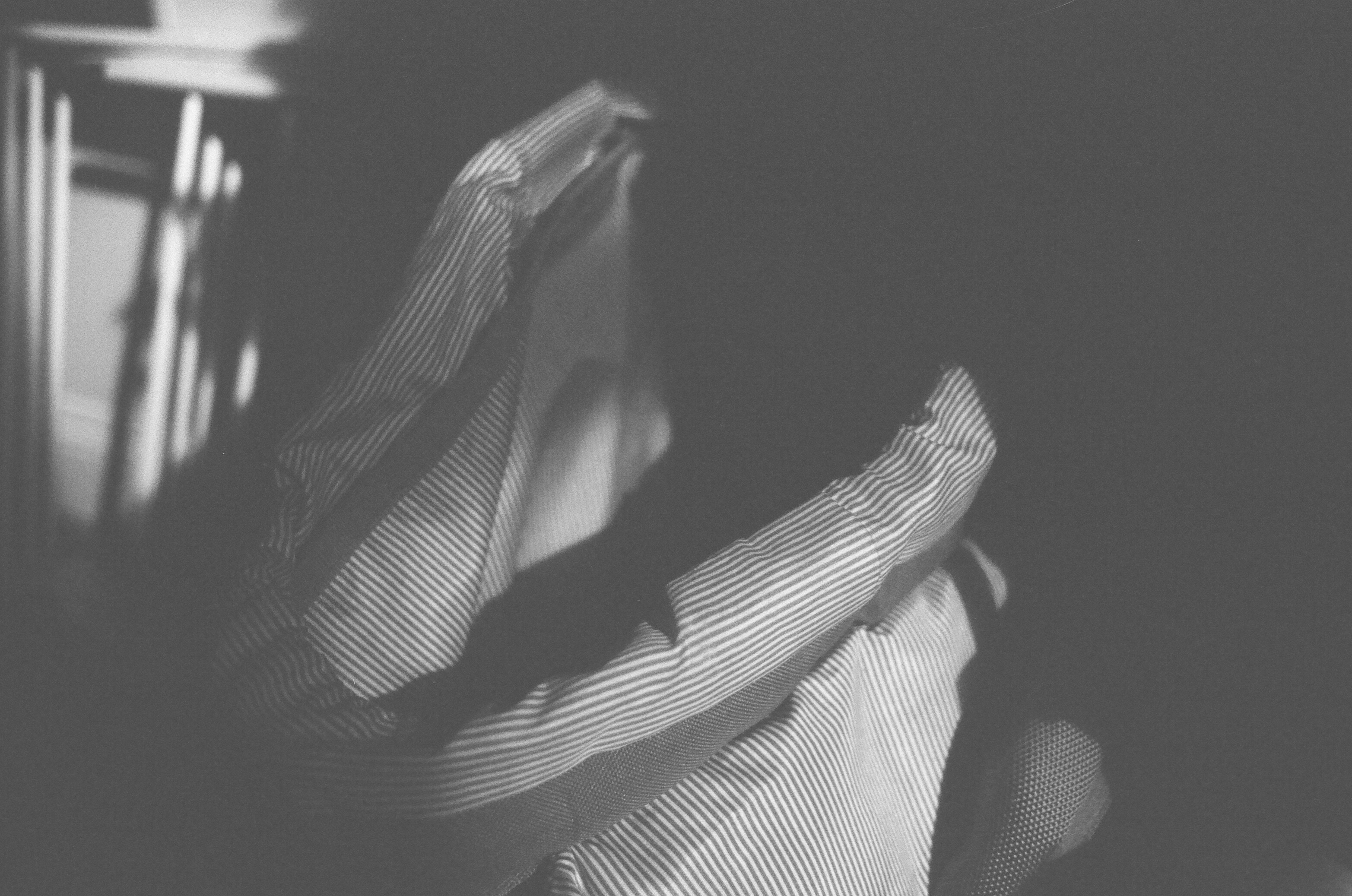
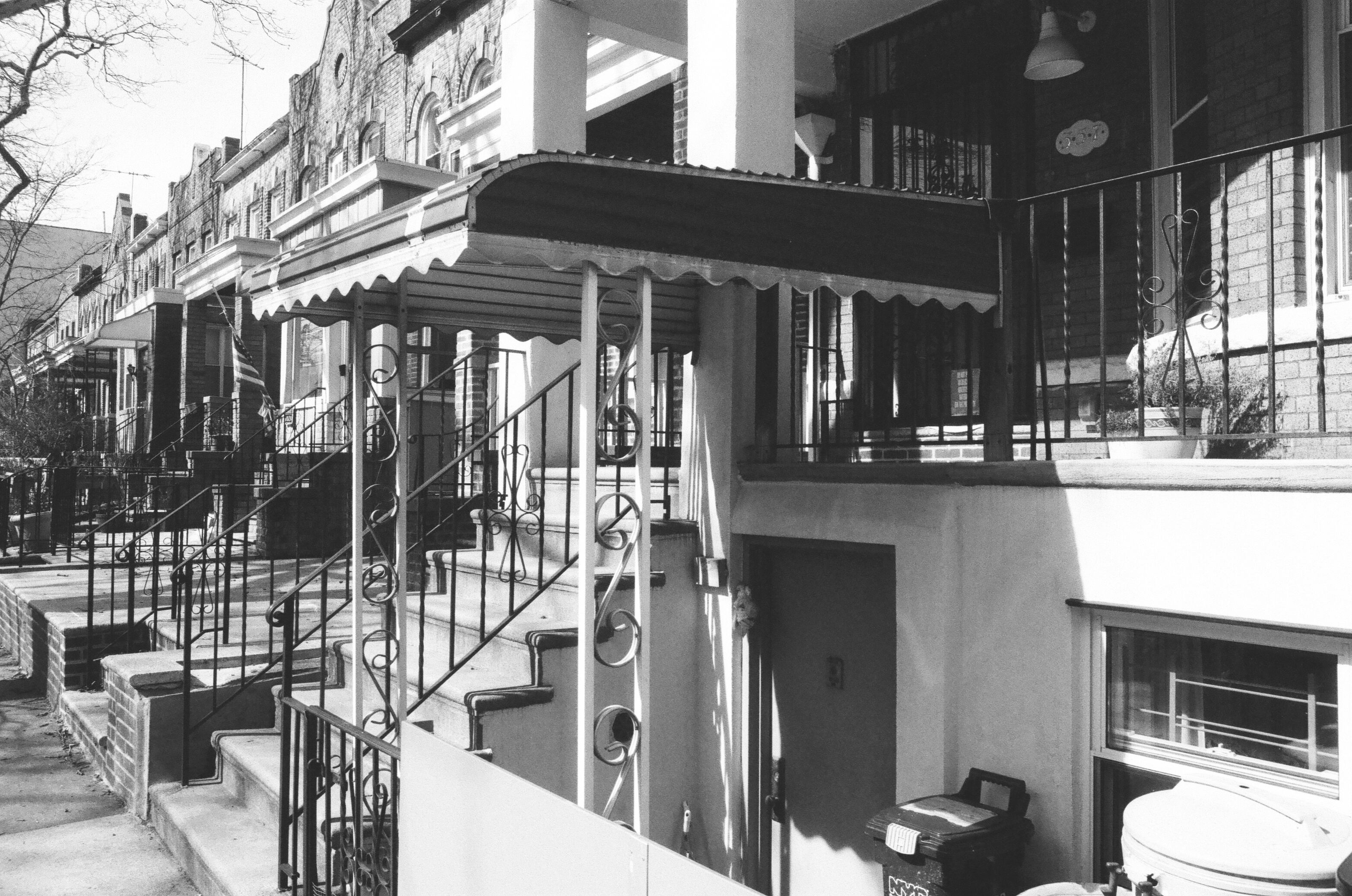
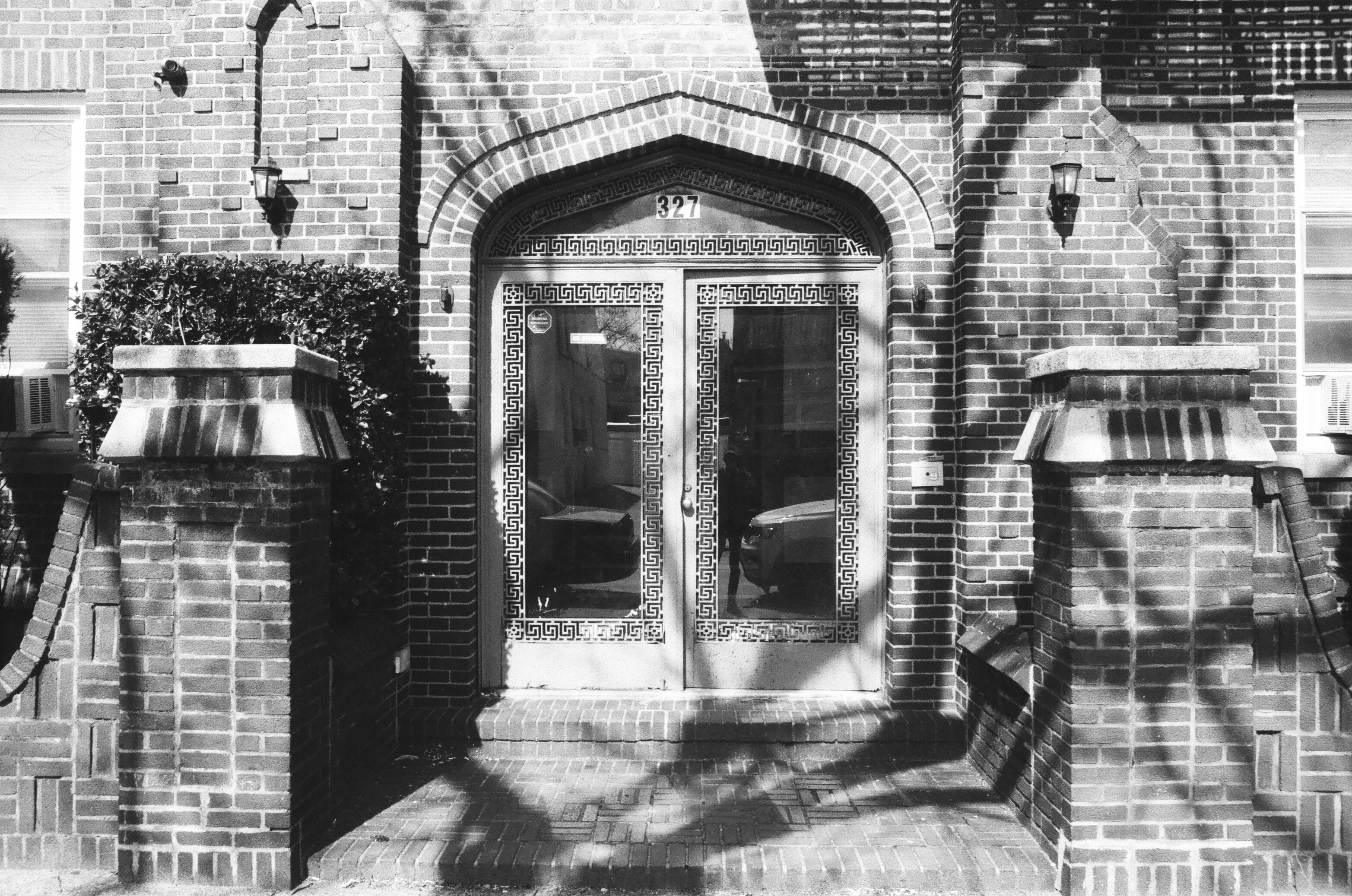
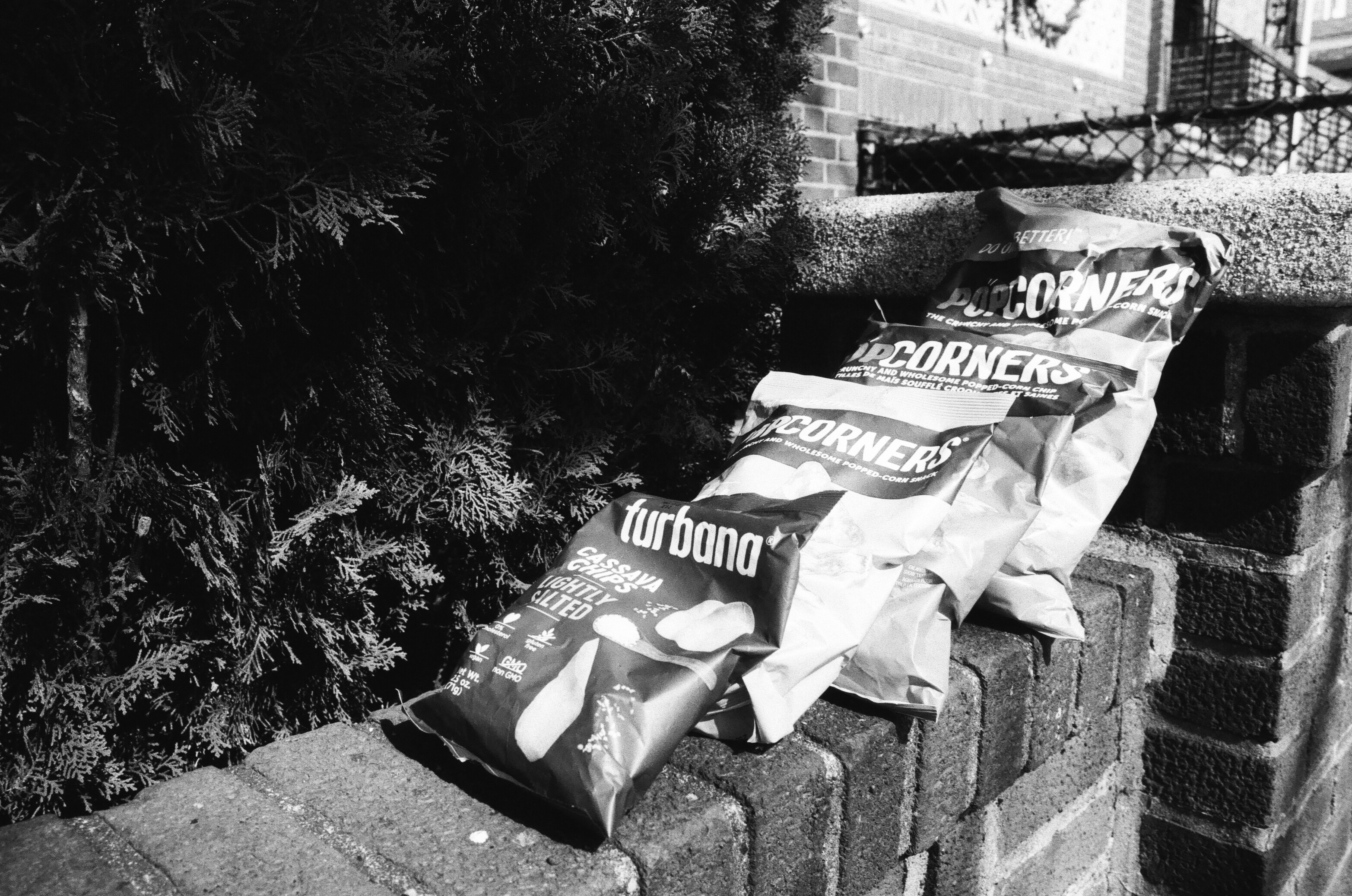
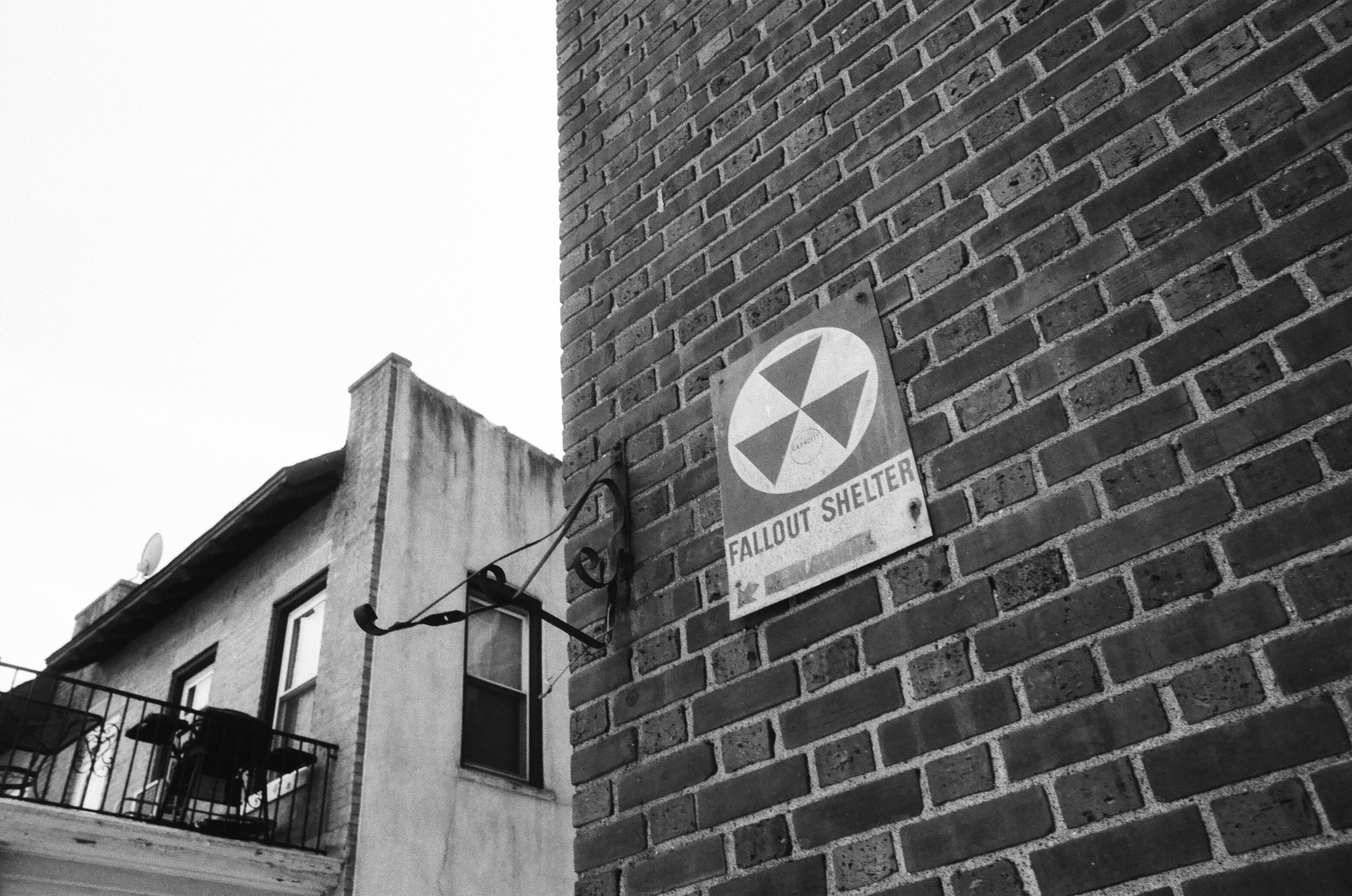
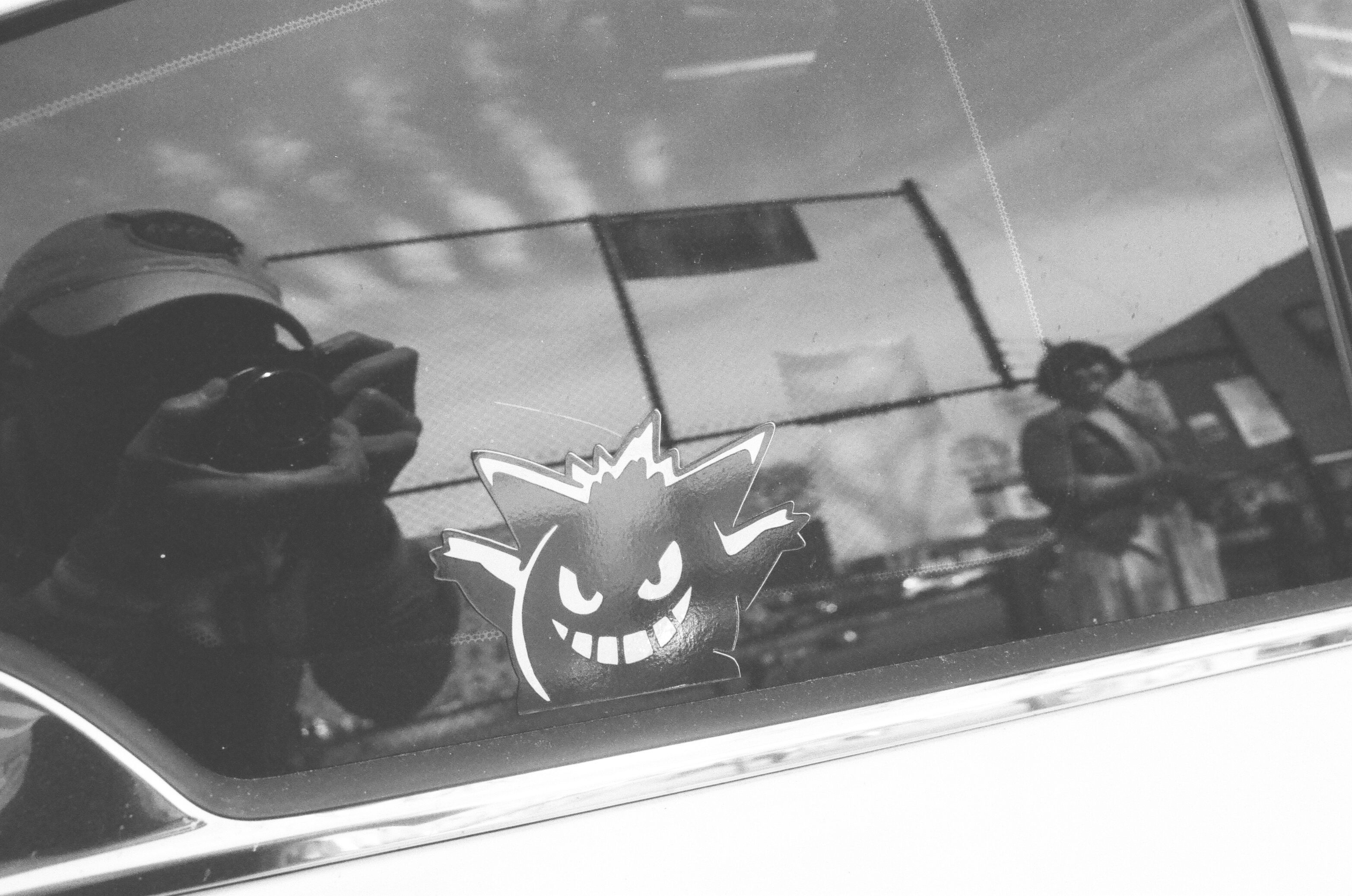
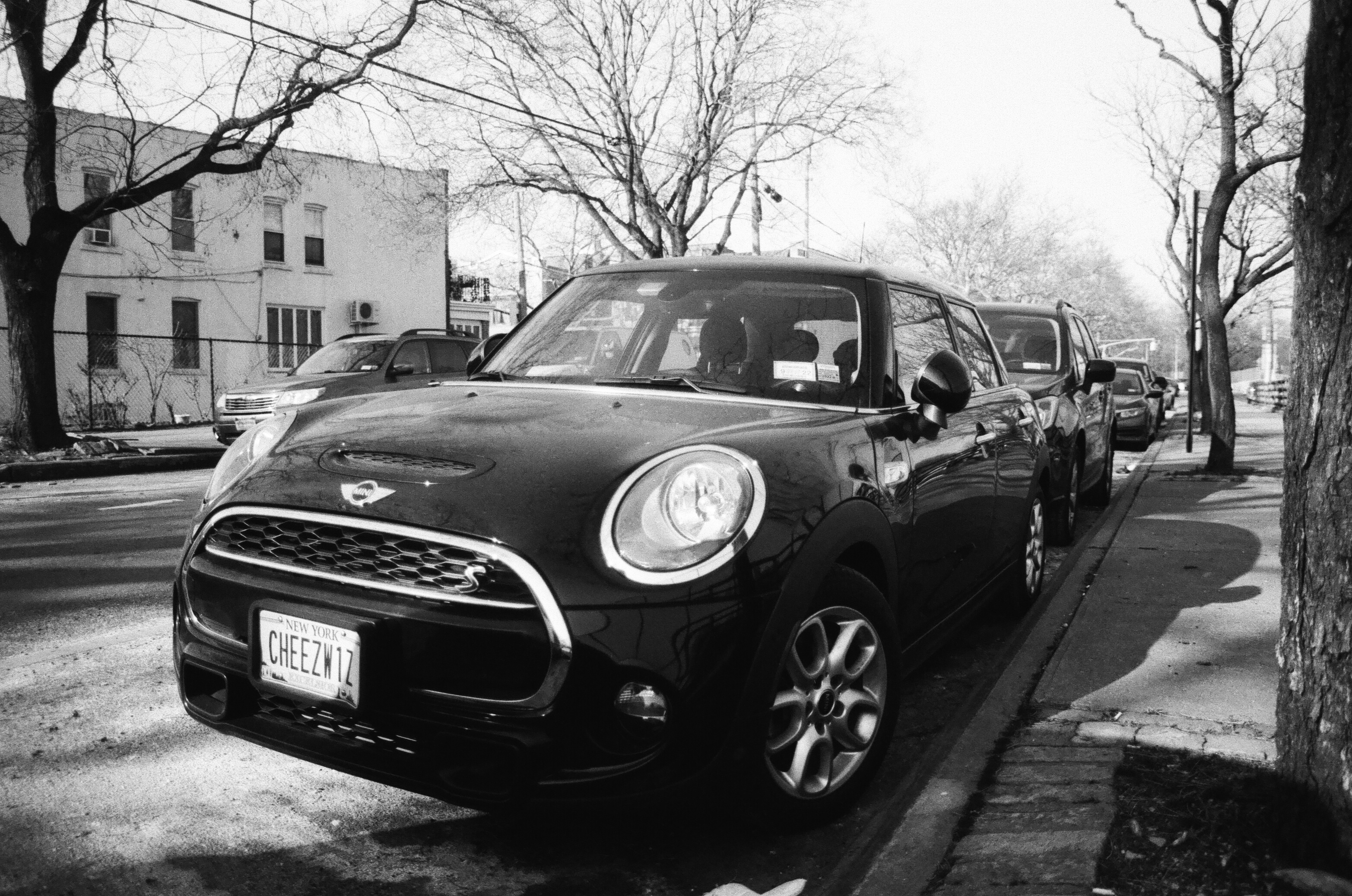
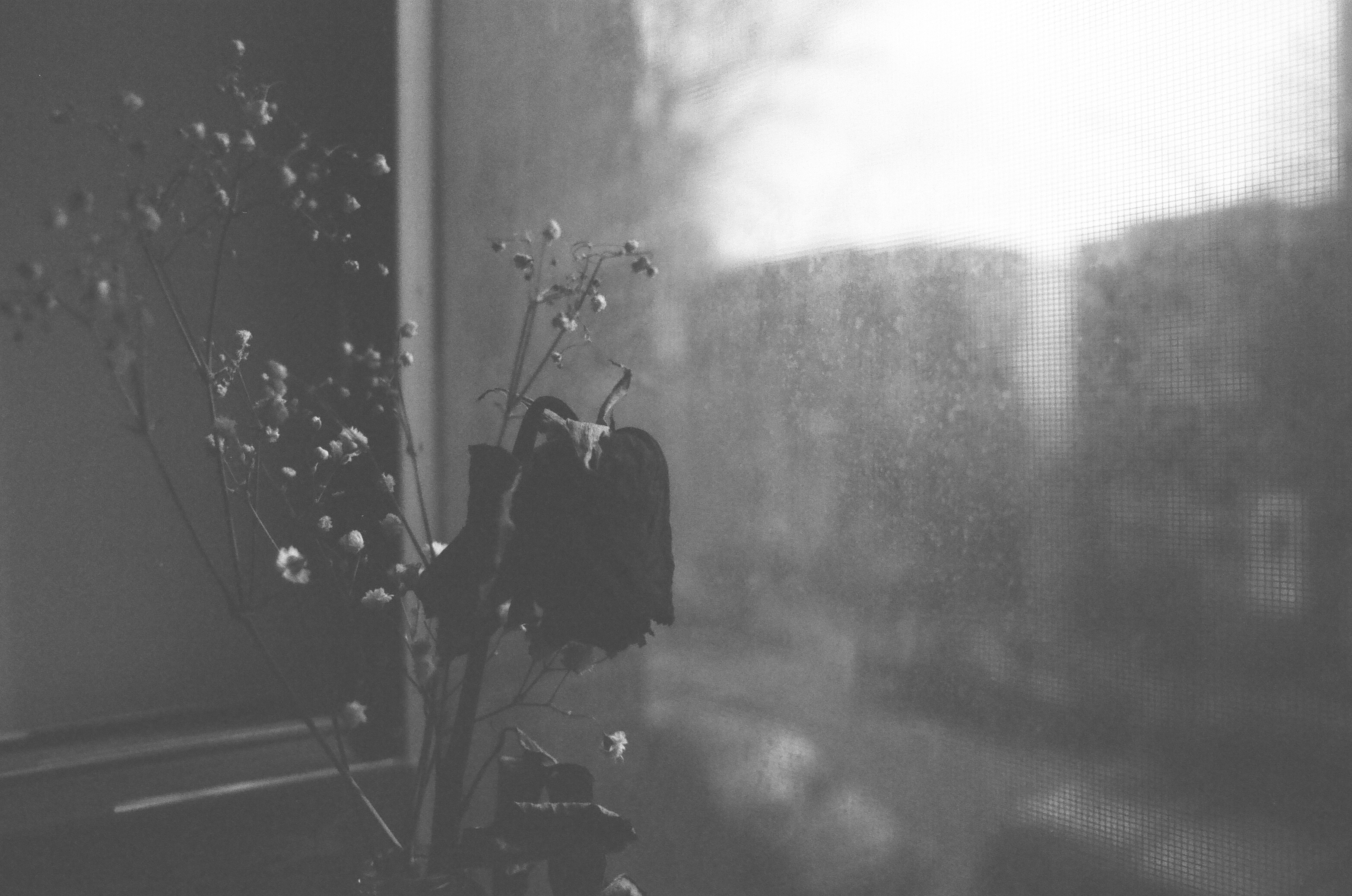
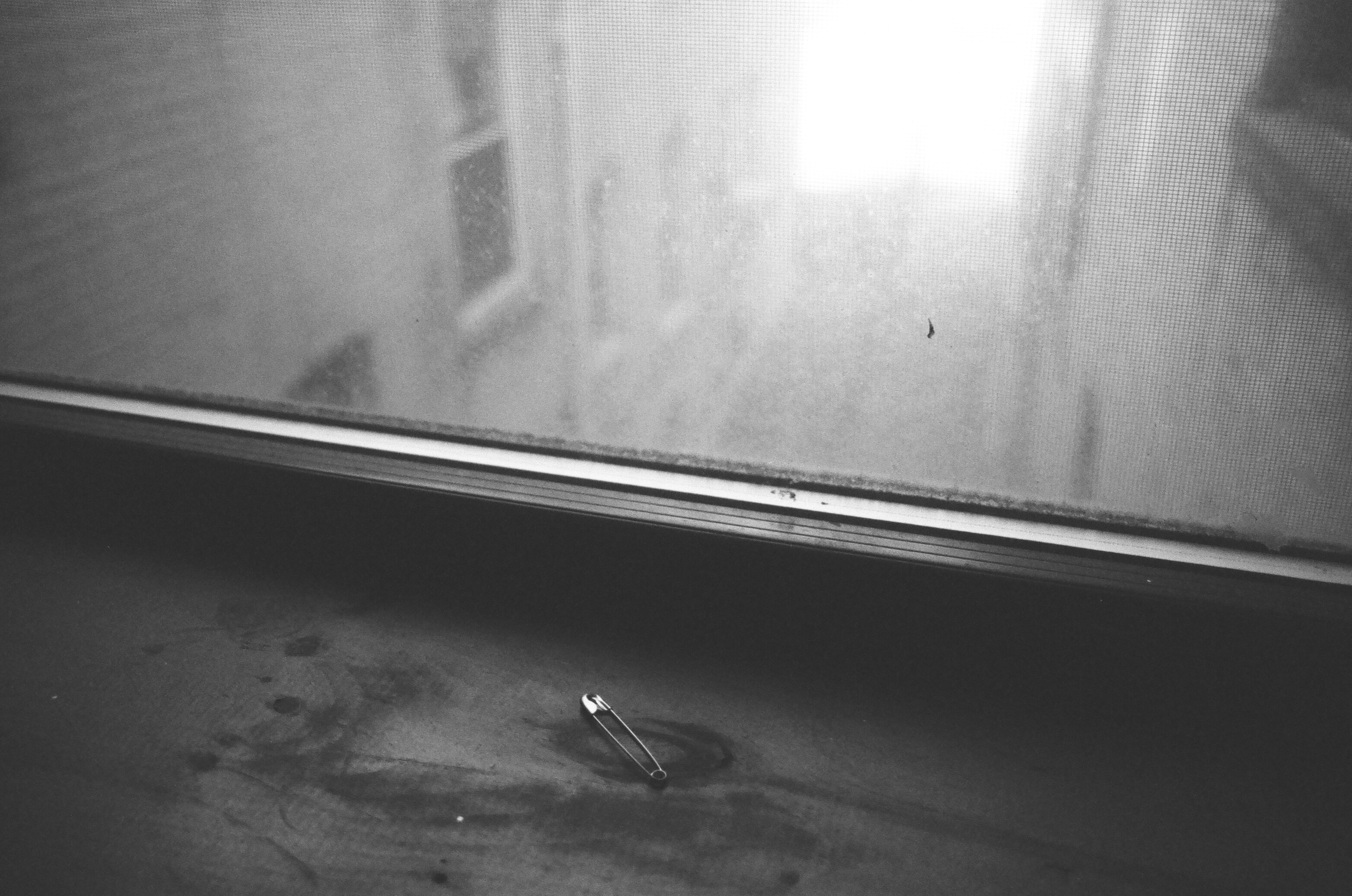
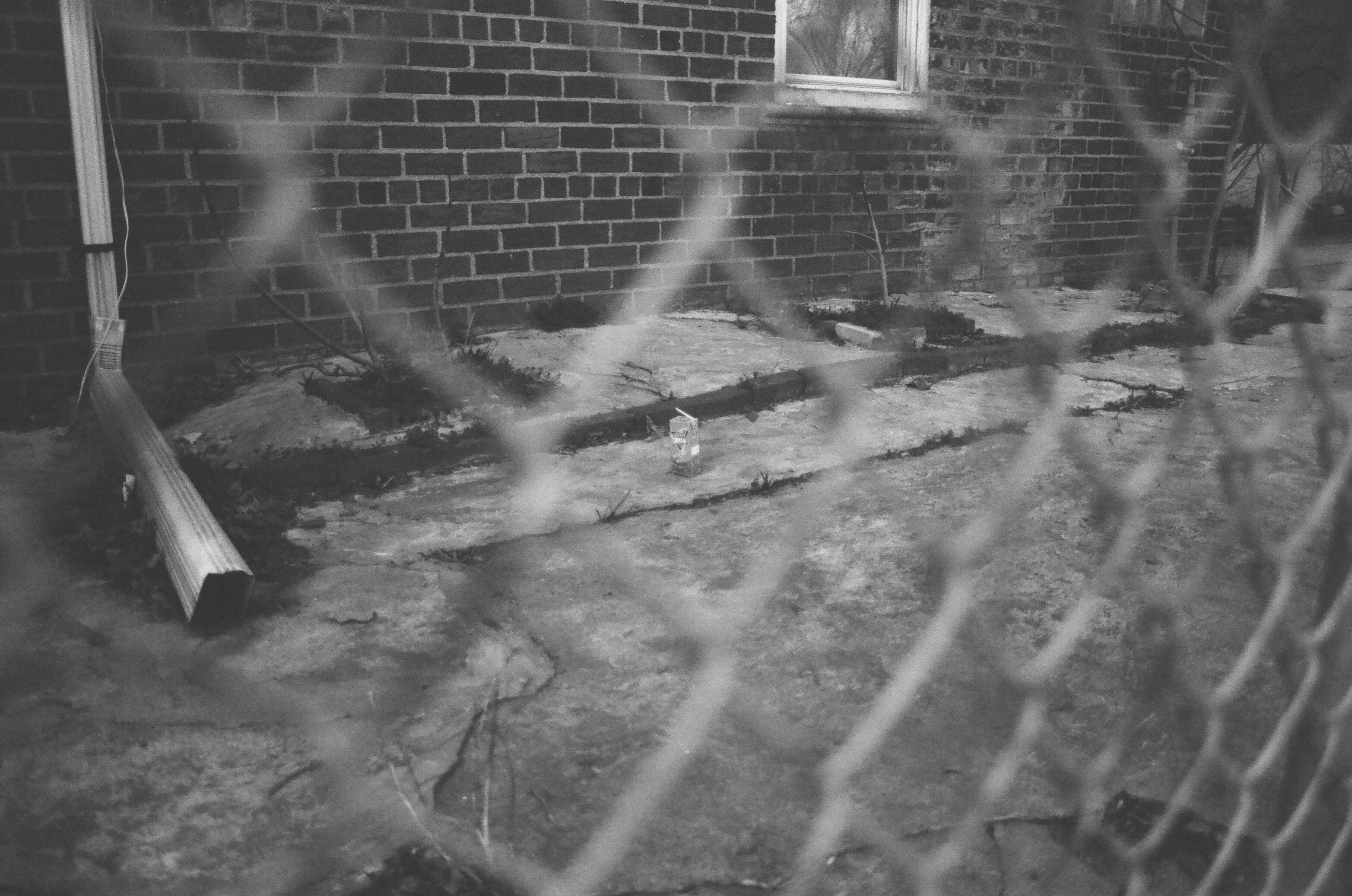
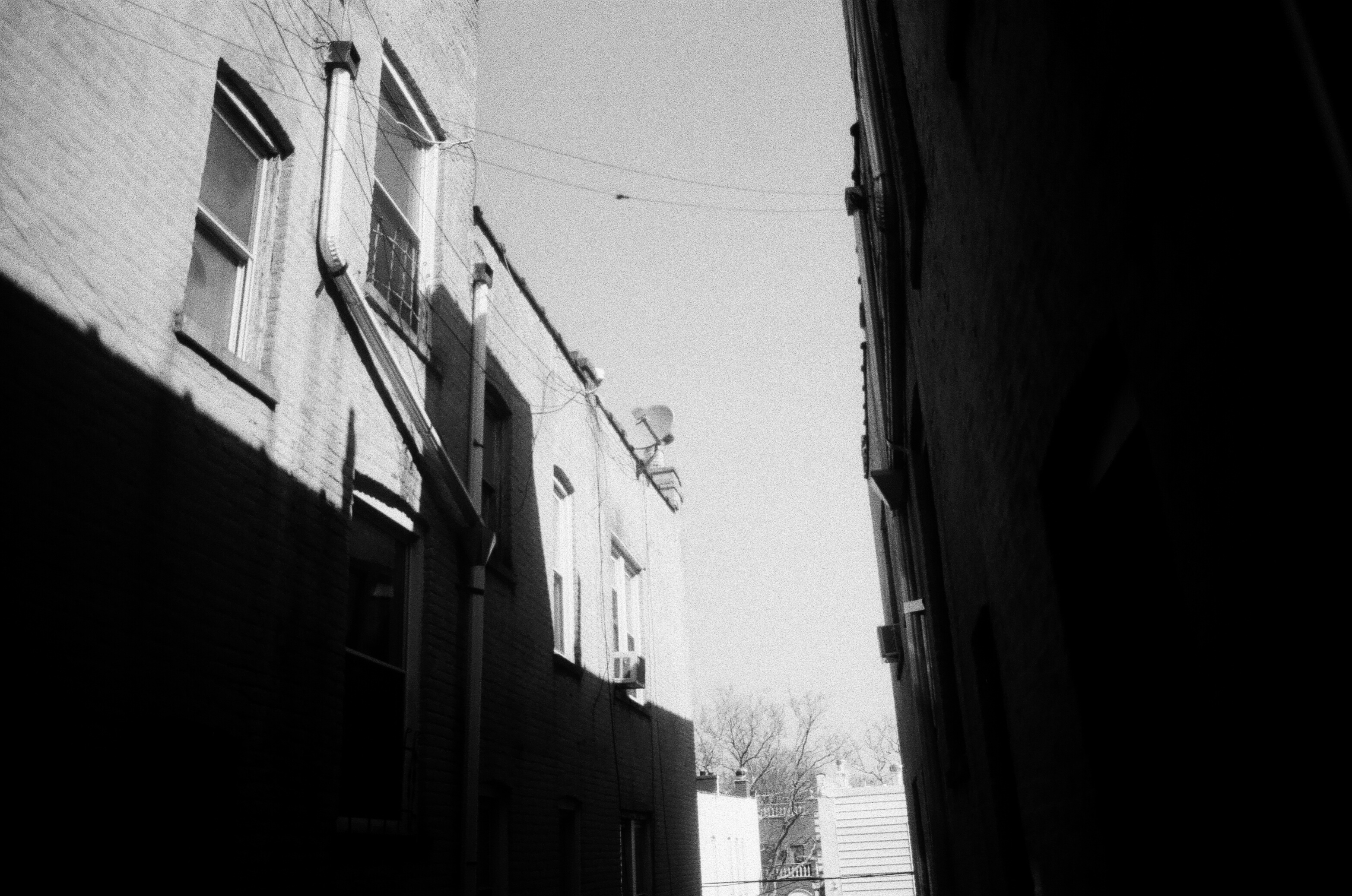
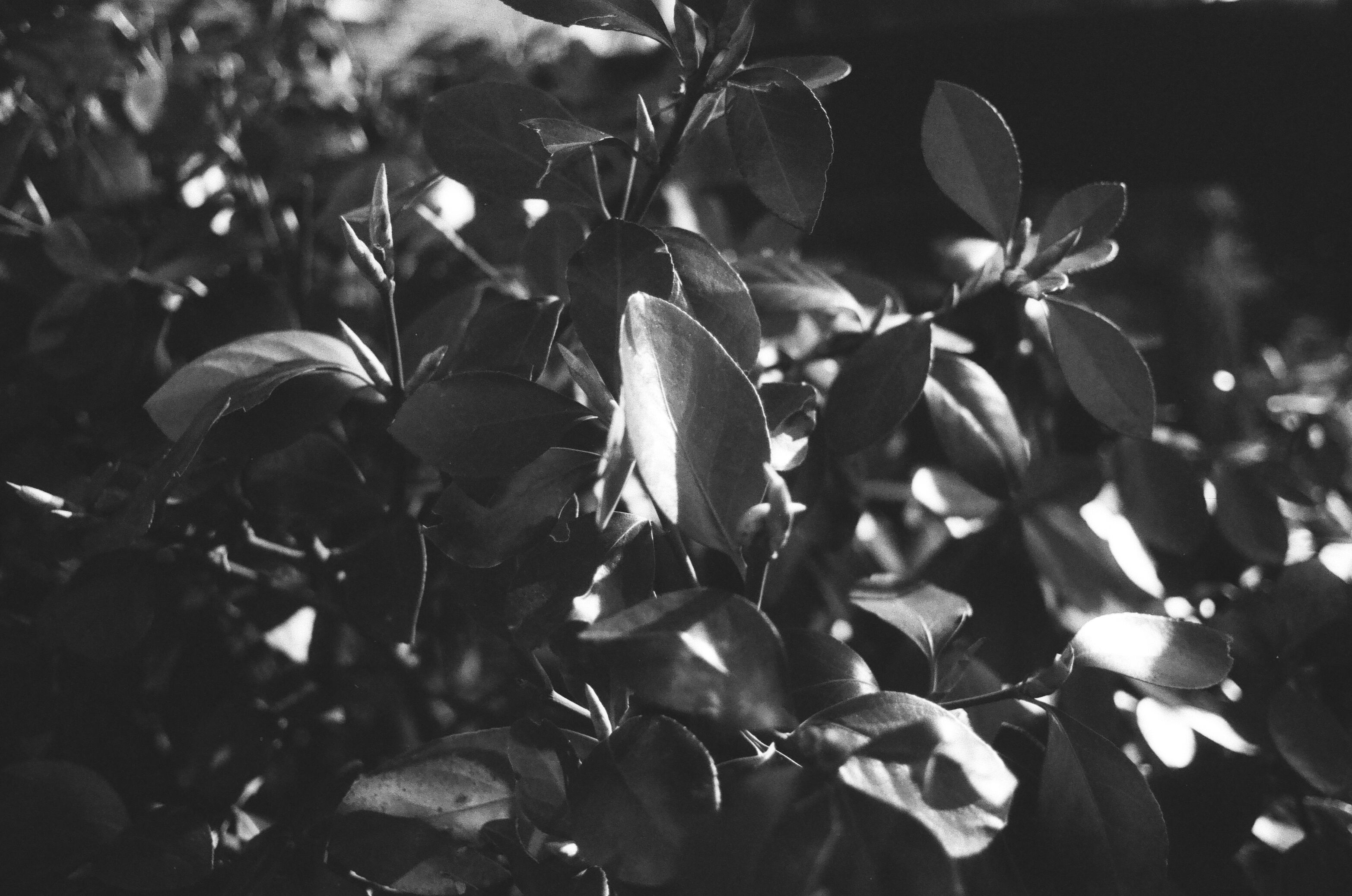
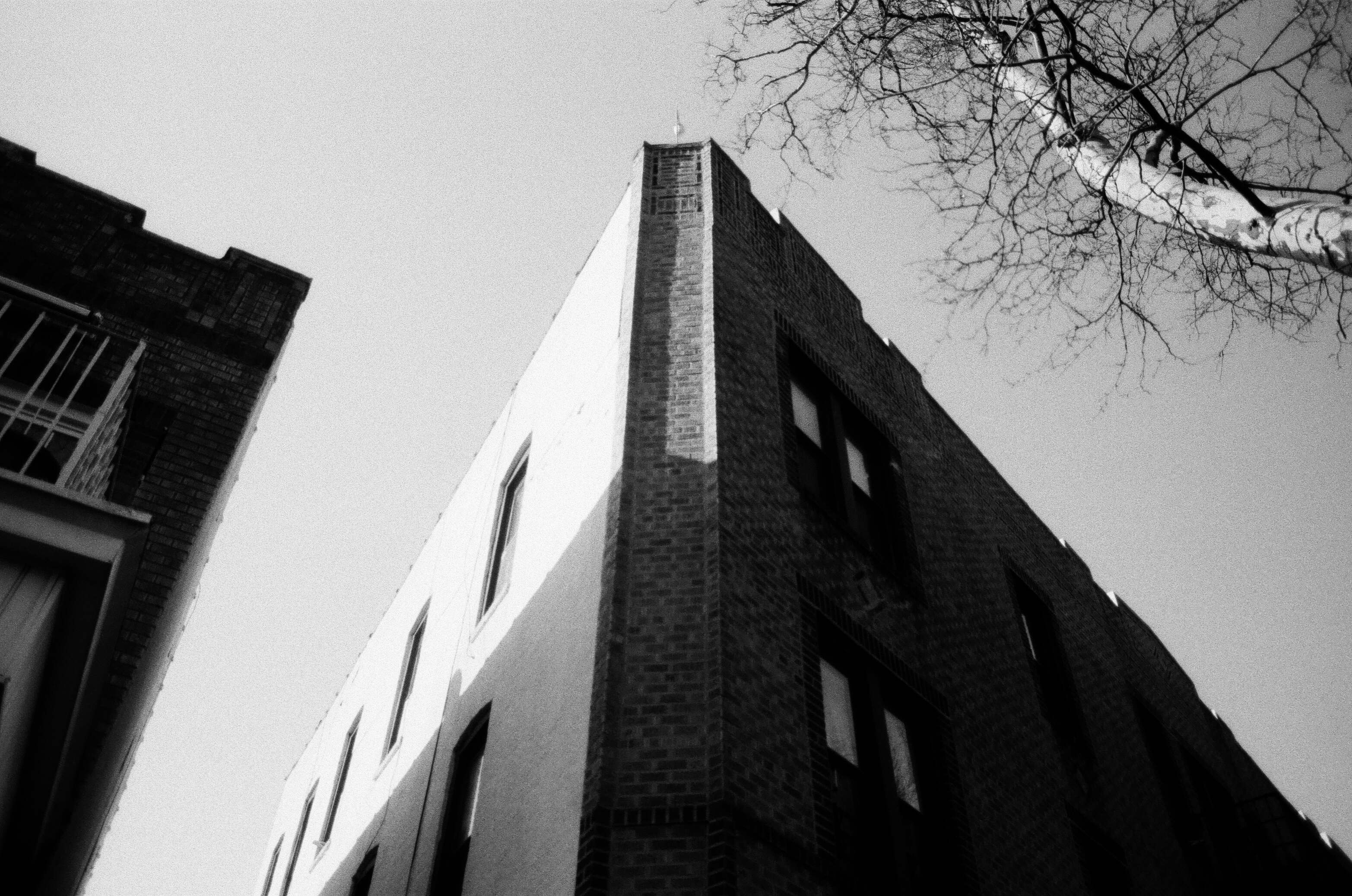
Shooting black & white proved to be a completely different beast. I never regularly shot black & white on digital, so I was already on the back foot for shooting B&W film, and it really shows here.
The most successful shots in this batch, I feel, are the ones that show the greatest amount of contrast between light and shadow. The first shot of the cafe sign, the shots of the blinds and the sunlight on the door, and the final shot looking up at the corner of a building, are all good examples of this. Even the shot of the car works well since it's rendered so dark against a largely lighter background.
Other shots like the shrub in front of the window, the light on the striped backpack, and leaves of a bush, could all stand to be a bit more contrasty in my opinion. Some darker shadows, some brighter highlights, and things would pop.
My main takeaway from shooting B&W film for the first time is that you need to be constantly thinking about light and contrast. Creating focus on a subject when shooting color is easy, because it's much easier to compose a shot with color contrast in mind, at least for me. A yellow flower stands out from green leaves, a green door stands out from red bricks, etc. Shooting in B&W, you need to find a way to create contrasts in other ways, in order to make things stand out.
Obviously, art is subjective, and you can ultimately shoot however you like. These are just my personal thoughts of what to work on for next time.
All in all, I'm having an absolute blast shooting film, and I'm so glad I finally pushed myself to pick up a camera and try it. If you have the means, I highly recommend it.
It's a shame that film should be considered a dying medium, and so I'm grateful to companies like Lomography that are keeping things going by continuing to produce film, and experimenting with new cameras and formats. Now that I've caught the bug, I grabbed a few new stocks to shoot on, pictured below, and I can't wait to do so!
Even if you can't shell out for a fancy film camera, I think everyone should try their hand at photography more often. Take a walk around your neighborhood and try to compose some interesting shots with your phone. Pick out the shots you like and don't like, and learn some lessons for next time.
I find that walking around with my camera, seeking out the little details I've never noticed before, I start to see the world in a totally different way. And I think that's real neat.
